









“Being named a Top Workplace USA 2025 is a huge honor, especially since it comes straight from our team members. We won for our region in 2024, and to now be recognized nationally is something we’re really proud of. Our team is at the heart of Rouses — some have been with us their whole careers, while others are just getting started — but they all share a passion for what we do. They’re the reason Rouses feels like home. It means a lot to know they consider Rouses the best place to work. And just as important, we truly appreciate that you — our customers — keep voting us the best grocery store on the Gulf Coast year after year. We serve over a million customers every week, and we don’t take that for granted. Thank you for choosing Rouses.”
— Donny Rouse, CEO, 3rd Generation
Crawfish season is in full swing right now. We have live Louisiana crawfish by the sack — we’ll sell more than 40,000 sacks this season — and boil Louisiana crawfish daily in our stores, using our own Down the Bayou Seafood Boil mix. We have designated boilers who grew up boiling and are trained to do it right, so every batch comes out perfectly seasoned. We also set up boiling trailers right in front of most of our stores.
This season alone, we’ll sell more than 4 million pounds of live and boiled Louisiana crawfish; 750,000 pounds of corn, potatoes, mushrooms, Brussels sprouts, carrots and sausage; 60,000 eggs (yes, people eat eggs boiled in crawfish seasoning — you should try it); 25,000 pounds of turkey necks; and 7,000 pounds of boudin.
You can get our Louisiana crawfish — hot and spicy, fresh out the pot — every day from 11 AM to 7 PM. They come with potatoes and corn, but we’ve also got all the fixings, boiled in that same seafood mix.
Because we sell more Louisiana crawfish than anyone on the Gulf Coast, we work with more than 20 Louisiana crawfish suppliers. Some of the best crawfish come from the Atchafalaya and Vermilion-Teche basins, where rivers, bayous, swamps and lakes are filled with wild crawfish. But most Louisiana crawfish are farm-raised.
Rice fields, especially in Acadia Parish, double as crawfish ponds. Supreme Louisiana Crawfish farms crawfish in the same local ponds that produce their Supreme Louisiana Rice. Farmers plant rice in the spring, harvest in the summer, then flood the fields in the fall, creating the perfect habitat for crawfish. Usually by late December, the first crawfish emerge, and by mid-June, the season winds down — just in time to start the cycle all over again. Because crawfish feed on rice stubble, some farmers plant “crawfish rice” or green rice — a fast-growing crop that provides food and cover — to jumpstart the season even earlier.
Once the water hits 72ºF, crawfish kick into high gear. They eat more, move more, and grow

fast — molting their shells and nearly doubling in size every 10 days, as long as the ponds are full of food. This feeding frenzy is why spring is prime time for crawfish.
But when summer hits and the water temperature climbs into the mid-90s, the crawfish know what’s coming. Instead of growing, they burrow deep into the mud, waiting out the heat like tiny swamp survivalists. By late June, the season slows—not because we’re done eating crawfish, but because their shells are getting hard, and they’re done coming out.
When you’re at Rouses Markets this weekend, grab your crawfish — live or boiled — plus some Rouses Bayou Dipping Sauce, a few rolls of paper towels, and all the other supplies you need, including the cold beer — we have the largest craft beer selection on the Gulf Coast. Our brown paper bags are the new newspaper.
And for that bisque or etouffee (recipes you'll find in this issue): If nobody feels like peeling the leftovers, we’ve got Louisiana tails with the fat, just like they should be, in our frozen seafood case.
CEO, 3rd Generation
Creative Director & Editor
Marcy Nathan
Art Director & Design
Eliza Schulze
Illustrator
Kacie Galtier
Marketing Coordinator
Harley Breaux
Copy Editor
Patti Stallard
Advertising & Marketing
Tim Acosta
Amanda Kennedy
Stephanie Hopkins
Nancy Besson
Taryn Clement
Emily lajaunie


ARROW-CIRCLE-RIGHT Beth D’Addono is a writer specializing in travel, food, lifestyle and captivating stories about interesting people. She regularly contributes to outlets such as USAToday/10Best, AAA Traveler, AAA World, L.A. Times, Eater and more. Her latest book, New Orleans Eats, is out now.
ARROW-CIRCLE-RIGHT Susan Langenhennig Granger is editor of Preservation in Print magazine and director of communications and marketing for the Preservation Resource Center in New Orleans. Prior to that she was a news editor, reporter and feature columnist for The Times-Picayune and NOLA.com.
ARROW-CIRCLE-RIGHT Ann Maloney is the former recipes editor and a food reporter at The Washington Post, specializing in quick and easy home cooking. From 2016 to 2019, she was a food and dining writer at NOLA.com | The Times-Picayune in her hometown of New Orleans, where she also served as arts and entertainment editor from 2004 to 2015. Prior to that, she worked for The New York Times in various roles, spending most of her time as features editor for the New York Times Regional Newspaper Group.
ARROW-CIRCLE-RIGHT Dominic Massa is executive vice president & chief operating officer at WYES-TV, New Orleans’ PBS affiliate. He has more than 25 years of experience in documentary and cultural programming and has earned two regional Emmy awards. He previously worked at WWL-TV (CBS) as executive producer. Massa has written books on New Orleans television and radio history.
ARROW-CIRCLE-RIGHT Liz Thorpe is a veteran of the specialty food industry, and is particularly known for her expertise in specialty cheese. She is the author of The Cheese Chronicles and The Book of Cheese and is regularly featured in media outlets as diverse as The Kelly Clarkson Show, The Wall Street Journal and the History Channel. When Liz isn’t running her company, The People’s Cheese, she enjoys researching and educating about the history, culture and science of food. She has been spending time in Maine since childhood and has a special place in her heart for cold water and fresh lobster.
ARROW-CIRCLE-RIGHT Poppy Tooker is a native New Orleanian who has spent her life immersed in the vibrant colors and flavors of her state. Poppy spreads her message statewide and beyond via her NPR-affiliated radio show and podcast, Louisiana Eats!
ARROW-CIRCLE-RIGHT Nick Underhill began his career covering the Saints for The Times-Picayune, The Advocate, and other local publications before briefly moving to Boston, where he chronicled the final chapter of the Belichick-Brady era for The Athletic. Upon returning to New Orleans, Underhill founded NewOrleans.Football, a subscription-based platform featuring in-depth articles and podcasts, sponsored by Rouses Markets. Underhill gained national recognition when he earned first place in the Associated Press Sports Editors’ (APSE) Explanatory Writing category in 2018 for his analysis of Drew Brees’ passing game since 2006. (That same year, he was named Louisiana Sportswriter of the Year by the National Sports Media Association.) Previously, he earned a Top 10 Award from APSE for Breaking News as part of a team covering the 2016 shooting death of former Saints player Will Smith.


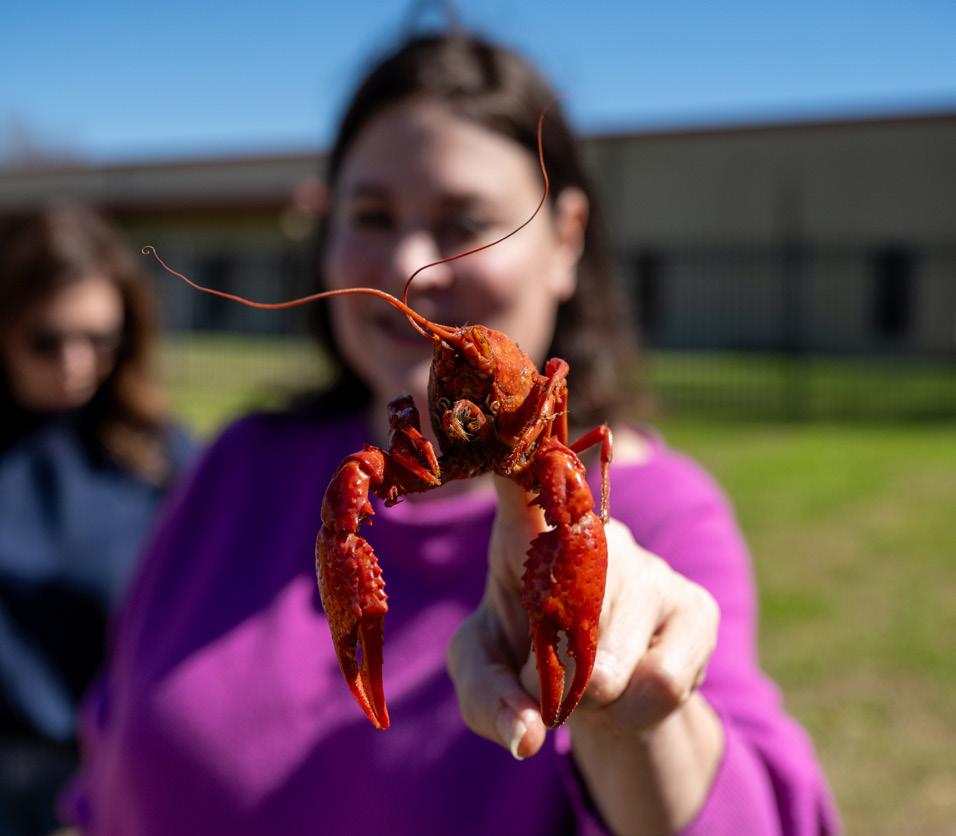















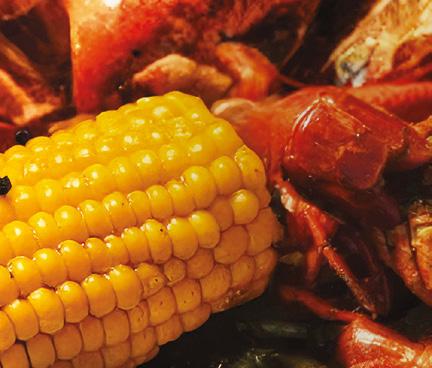





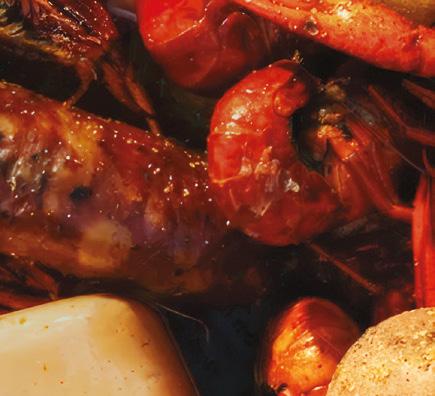




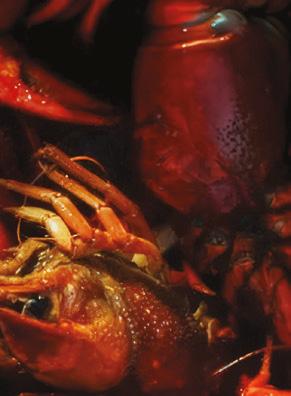




by Marcy Nathan, Rouses Markets Creative Director
The first time I sat down with food writer, photographer and cook Pableaux Johnson to discuss a story for Rouses magazine, we met at District Donuts on Magazine Street in New Orleans. We knew each other socially — and I’d followed his work in The New York Times — but this was our first real meeting. About 15 minutes in, the manager walked over, looking slightly panicked.
“Are either of you a doctor?” No. “A nurse, maybe?” Also no.
While we were deep in conversation about food and storytelling, a woman — who said she had no idea she was pregnant — had just given birth in the bathroom. “Ain’t that somethin’?” Pableaux said. (He was famous for his “Pableauxisms.”)
He was also famous for his Monday night red bean dinners. A dozen or so people — an ever-changing cast of friends, writers and visiting journalists — “Who’s supposed to be there will be there” (another Pableauxism) — would gather around his kitchen table for red beans and rice, served with cornbread straight from the skillet. “Bring whatcha wanna drink” (and another). No fuss, no pretense. Just conversation and community. I was lucky enough to be a guest at a couple of those dinners. He even shared his recipe for Red Beans & Rice in Rouses magazine.
Born in New Iberia, Pableaux moved to New Orleans in 2001. He started those Monday night gatherings soon after. Eventually, he took them on the road, turning our local tradition into the Red Beans Road Show. He’d load up his car with Camellia Brand Red Beans, and pop up with chefs at restaurants in cities across the country.
During the holidays, he played a different role: Gumbo Claus. He’d stockpile frozen turkeys, make gallons of his Turkey Bone Gumbo, and deliver it to whoever needed it. He was like that — always feeding people, always telling stories. He even wrote about it for Rouses, in a story titled Gumbo Crazy
He was a fixture at second lines — he got his music on the street — and a champion of local culture. He photographed everyone — friends, strangers, musicians — and always made sure they got their pictures the next time he saw them. And most of all, he had a deep-rooted appreciation for the way meals — even something as simple as red beans & rice — bring people together.
He was just glad to share his world with you.
PABLEAUX JOHNSON’S RED BEANS & RICE
Serves about 12
WHAT YOU WILL NEED :
1½ pounds dried red beans
1 pound andouille sausage, sliced ½-inch thick (smoked sausage can also be used)
4 tablespoons olive oil
6 garlic cloves, minced
2 medium onions, finely diced
1 large rib celery, finely diced
1 medium green bell pepper, chopped
1½ teaspoons black pepper
¹⁄₈ teaspoon cayenne pepper
2 teaspoons salt
3 bay leaves
2 teaspoons dried basil
¾ teaspoon dried sage
1 cup chopped fresh parsley
1 bunch fresh green onions, chopped
Cooked white long-grain rice, for serving
In a large bowl, cover beans in water and soak for at least 4 hours or overnight. (Water should cover beans by at least an inch.)
In a large, heavy pot, brown sausage in 1 tablespoon of oil until slightly crisp. Add remaining oil, then the garlic and onions. Sauté over medium heat until onions become transparent and limp. Add celery and bell pepper and sauté for 5 minutes. Pour soaked beans and water into the pot and bring to a simmer. Add black pepper, cayenne, salt and all herbs except parsley. Cook until beans are softened, about 1½ to 2 hours. Taste and adjust seasonings. Fifteen minutes before serving, remove 1 cup of beans to a bowl and, using a fork, mash them and stir the mashed beans back into the pot to enhance the creamy texture of the dish. Add parsley and green onions.
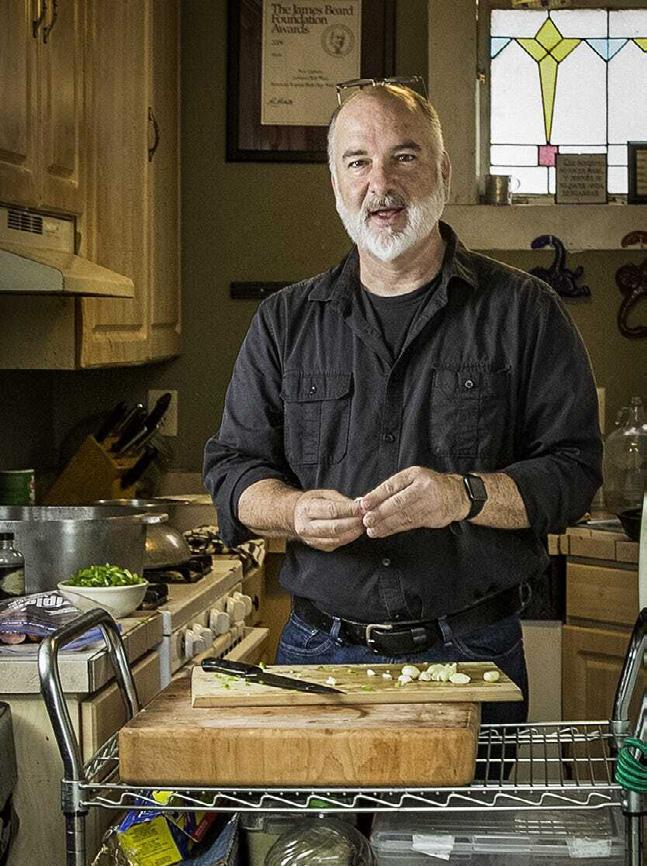
Simmer about 15 minutes, taste and adjust seasoning if needed, and add up to 1 cup more water if beans seem too thick. Remove bay leaves. Serve over white long-grain rice.
You can revisit some of Pableaux’s stories for Rouses magazine and celebrate his love for Louisiana’s food culture at www.rouses.com.

by Ann Maloney
Nick Acosta’s Crawfish Stew starts the way many delicious South Louisiana dishes do. He stirs together a mahogany-dark roux, adds the trinity of onion, celery and bell pepper, and pours in the seafood stock.
But then he enhances that base with a generous pour of sherry and seasonings, some expected, such as Tony Chachere’s Creole Seasoning, and some less so, including chili powder. Nick cooks that low and slow until the flavors meld and combine to create a rich, flavorful base.

Putting eggs in stew is something Nick (who started at Rouses “hustling buggies” at a store in Thibodaux and who is now director of business analytics) has enjoyed as long as he can remember. “That’s something both of my grandparents would do. My mother-in-law does it, too.” Along with providing more flavor, the eggs can help stretch a stew, adding extra protein, too.
As for the sherry, rather than adding a shot to a bowl at the table, Nick pours in a generous half cup at the start, allowing the spirit to cook down in the sauce. “I find the sherry gives it a little rich taste,” he says. “It gives it a different flavor.”
When the sauce is just right, the crawfish tails go in. And, finally, he adds boiled eggs. Some are left whole, but others are cut in half, allowing the yolks to enrich the sauce.
When he makes this stew at home for his wife, Allison, and their three kids, he is usually doing his big-pot weekend cooking, so he uses two pounds of
“I make pork stew and beef stew much the same way,” Nick says, noting that like many South Louisianians, he learned the fundamentals of Cajun cooking from his elders, including his parents Tim and Cindy Acosta, “…and then I spun it from there, doing my own thing after that.”
He’s drawn to making this stew when he can get fresh crawfish tails with lots of the flavorful yellow fat. But, he says, frozen tails work pretty well too.
The dark, rich stew is ladled over rice, of course.


by Tim Acosta, Rouses Markets Advertising & Marketing Director
Can you successfully scramble an egg? If so, you’re well on your way to making this Crawfish Boil Scramble featured in Tim Acosta’s Cookin’ on Hwy. 1 column.
It’s an ideal day-after-the-boil meal because it is quick and easy, and allows you to eat a variety of leftovers. Imagine this: A crawfish boil on Good Friday and this skillet of eggs cooked with tails, potatoes, onions and sausage on your Easter Sunday breakfast table. Sounds like a match made in heaven, right?
“It’s just utilizing leftovers to make something delicious,” said Tim, who is Rouses Markets’ marketing & advertising director. “It’s one of my favorites. My wife enjoys it. The boys enjoy it.”
The inspiration for the recipe grew out of an Acosta family vacation tradition. Tim and his wife, Cindy; their sons Nick, Chris, and Cody and their families; travel to Florida each summer.
“There’s a lot of breakfasts being cooked out there,” he said. “We have eggs every morning. One morning, I did something similar to this [crawfish scramble] using leftover jambalaya or boudin. I warmed that up, added my eggs and scrambled it all up.”
It was a hit, so now he makes a scramble with all kinds of leftovers.

“We never had any picky eaters in my family,” he said, noting that the best scramble ingredients are whatever you have right on hand in the home. If the family has had steak and potatoes the night before, it’s likely they’ll find a steak and potato scramble on the morning table.
Tim points out that he doesn’t put on crawfish boils while on vacation, but he has added this scramble breakfast to his day-after-the-boil ritual at home.
“Normally, when it’s just me and my wife, I do four eggs,” he said. “When I’ve got my family together in the summer, I’m scrambling a dozen eggs for breakfast.”
For this scramble, he whisks the eggs with a splash of milk, a little salt, Rouses’ Cajun Seasoning and a dash of Cajun Power Garlic Sauce.
Then he adds Rouses’ Italian Olive Oil Spray to a nonstick skillet, where he sautés his vegetables.
“The onion and the garlic from the crawfish boil are already soft. I just chop those and add them to the skillet along with potatoes, sausage and tails. You warm that up a bit, add your eggs and scramble. You cook it to your liking,” he said, noting that some folks like their eggs soft and custardy while others prefer a drier scramble. He then sprinkles grated cheese, such as Colby Jack, Cheddar or a Mexican blend, on top.
Tim keeps the eggs on the mild side as far as added heat goes, and places a bottle of Tabasco on the table for those who want more kick. He sees his recipe as a guideline. Prefer more tails and fewer potatoes? Go for it. He likes to add chopped jalapeños and peppers, too.
“It’s also a great way to do a breakfastfor-dinner type thing on a Sunday night,” he said.
If you don’t have crawfish boil leftovers, you can use frozen tails that have been thawed and drained. Just keep in mind that all ingredients other than the eggs must be pre-cooked. You can do that in the skillet that you’ll make the eggs in, if you like.
Want to turn your leftovers into an omelet? To make a classic folded omelet, you simply whisk lightly salted eggs, pour them in the pan, and cook them over a low flame until they are partially set, but the top is still jiggly. Then, add warm, pre-cooked filling to one side of the pan and gently fold the eggs over the filling. Voila! You’ve got a diner-style omelet with a custardy, delicious interior.
If you’re making a three-egg omelet and don’t want the filling to spill out, keep it to about a half-cup total of tails, potatoes, sausage and whatever other ingredients you’re using. If you overfill, it might not be as pretty, but it will still be delicious. (We’ll save the classic rolled or French omelet for another day.)












“When I boil, I like to do two separate pots at the same time — one for crawfish and the other for my fixings: potatoes, sausage, corn, garlic, onions, etc. The reason is that I find potatoes take longer to soften, to my liking, than the crawfish does. Not that I can’t boil them in the same pot; I just prefer it this way. I get my crawfish from my favorite grocery store, Rouses. Before I boil, I dump the sack into one of my ice chests and fill it with water to make sure the crawfish are good and clean.”
– Blake Richard, Director of Marine Supply/Commercial Sales, 3rd Generation
BLAKE RICHARD’S CRAWFISH & ALL THE FIXINGS
WHAT YOU WILL NEED :
1 sack live Louisiana crawfish
2 (4-pound) bags of Rouses Down the Bayou Seafood Boil (1 for each pot)
2 (16-ounce) bottles of Zatarain’s
Concentrated Liquid Shrimp & Crab Boil (1 for each pot)
Rouses Market Bay Leaves (a few for each pot)
12 large lemons, halved (6 lemons for each pot, squeezed; then dropped into pots after both fixings and crawfish have been dropped)
Smoked sausage (cut into 2-inch pieces), red potatoes (halved or whole), corn, onions, garlic, Brussels sprouts and artichokes. If using baby carrots, add them 2-3 minutes into the boiling process so they don’t get mushy.
Fill both pots halfway with water. Add 1 bag of Rouses Down the Bayou Seafood Boil to each pot and stir to combine. Add 1 bottle each of Zatarain’s Concentrated Liquid Shrimp & Crab Boil. Add a few bay leaves to each pot. (My uncle Donald recommended this to me). Squeeze the lemons into the water and drop the rinds in. Stir to combine. Bring both pots to a boil.
Add all of the crawfish to one of the pots. Once the water returns to a boil, let the crawfish cook for 5 minutes, stirring occasionally. After 5 minutes, turn off the heat and spray cold water from a hose onto the outside and inside of the pot to cool it down. Let the crawfish soak for 15-20 minutes, then remove the basket, drain and transfer crawfish to an ice chest or bucket.
At the same time, place the potatoes, corn, onions and garlic (except baby carrots) into a basket and lower it into the second pot. Once the water returns to a boil, cook for 2-3 minutes, then add the baby carrots (if using). Continue boiling until the potatoes are soft enough to slightly break when squeezed or a knife easily cuts through them. Turn off the heat and cool down the pot using the same hose method as used for the crawfish pot. Let the fixings soak for 15-20 minutes, then remove the basket and transfer to an ice chest or bucket.

ARROW-CIRCLE-RIGHT So many of you called and emailed us, worried that this year’s freak snowstorm would devastate the crawfish crop — especially after last year’s drought. But as Carl Hetzel, better known as the Crawfish Man, explains, crawfish are tougher than they look. Hetzel, who delivers fresh Louisiana crawfish to our stores across the Gulf Coast, says they’re incredibly adaptable.
“Crawfish are cold-blooded, so their body temperature matches their environment. When the water drops below 60 ºF, they slow way down — barely moving, eating or growing. Yeah, the ice got nearly three inches thick, but that big, fluffy layer of snow — I had 12 inches at my place in Crowley — actually insulated them in their burrows and kept them from freezing. Soon as it warmed up, they started moving again, crawling into the traps. And since they weren’t eating much, their snow snacks lasted more than a day—unlike the ones at my house.”


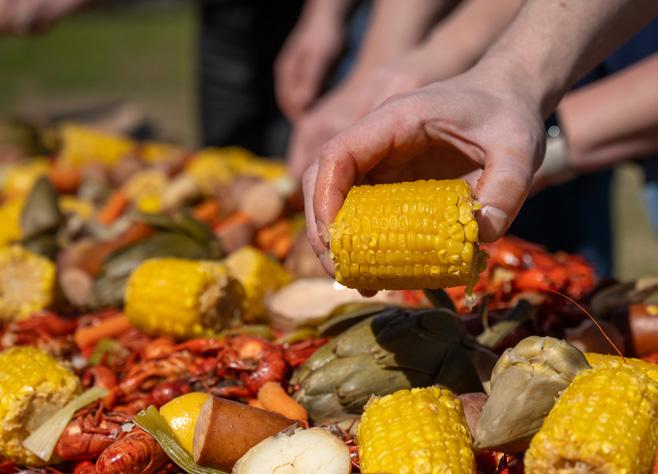
by Ali Rouse
While we were planning this issue of the magazine, my cousin Blake volunteered to do a crawfish boil for us. I have 16 first cousins on my dad’s side, spanning about 20 years, but most of us fall into a sweet spot of about eight years in the ’80s — that’s back in the 1900s, for any young folk out there — and we’re all close.
Some of us work at Rouses’ corporate office, so we see each other fairly often, but we still make time for cousin get-togethers. My cousins Blake and Chris and I are in charge of planning them, mainly through a group text aptly named “Cousin Committee.” We’ve organized dinners at our favorite local spots and house parties, and we’d been talking about doing a big crawfish boil — so this magazine shoot was a good trial run. We have so much fun, even our parents started getting FOMO — so now the “adults” join us sometimes.
At the magazine crawfish boil, which we held at our office, my cousin Nick joked that Blake put half the Rouses produce department in the pot. (Nick keeps his simple — just potatoes, mushrooms, onions and lemons.) Blake’s crawfish were spicy. And he used a trick my Uncle Donald taught him — adding bay leaves to the boil. They were delicious.
The Cousin Committee has grand plans for a big family reunion, gathering all the kids, grandkids and great-grands (who are multiplying faster than we can count!). It’s a tall order, but if there’s one party the Cousin Committee can pull off, it’s this one. And I’m thinking it should be a crawfish boil.




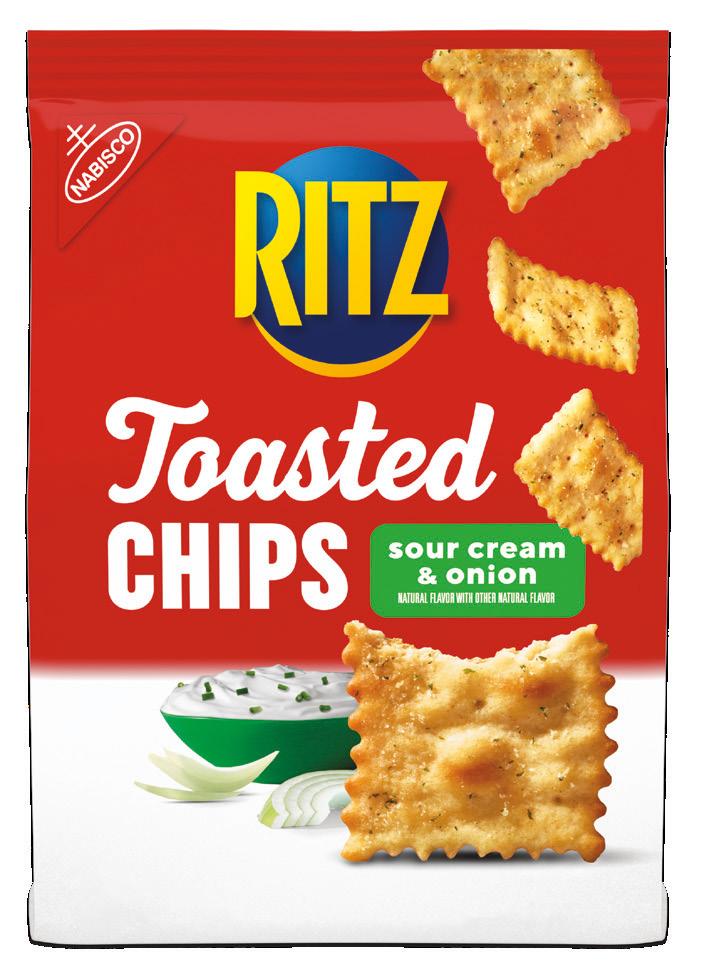


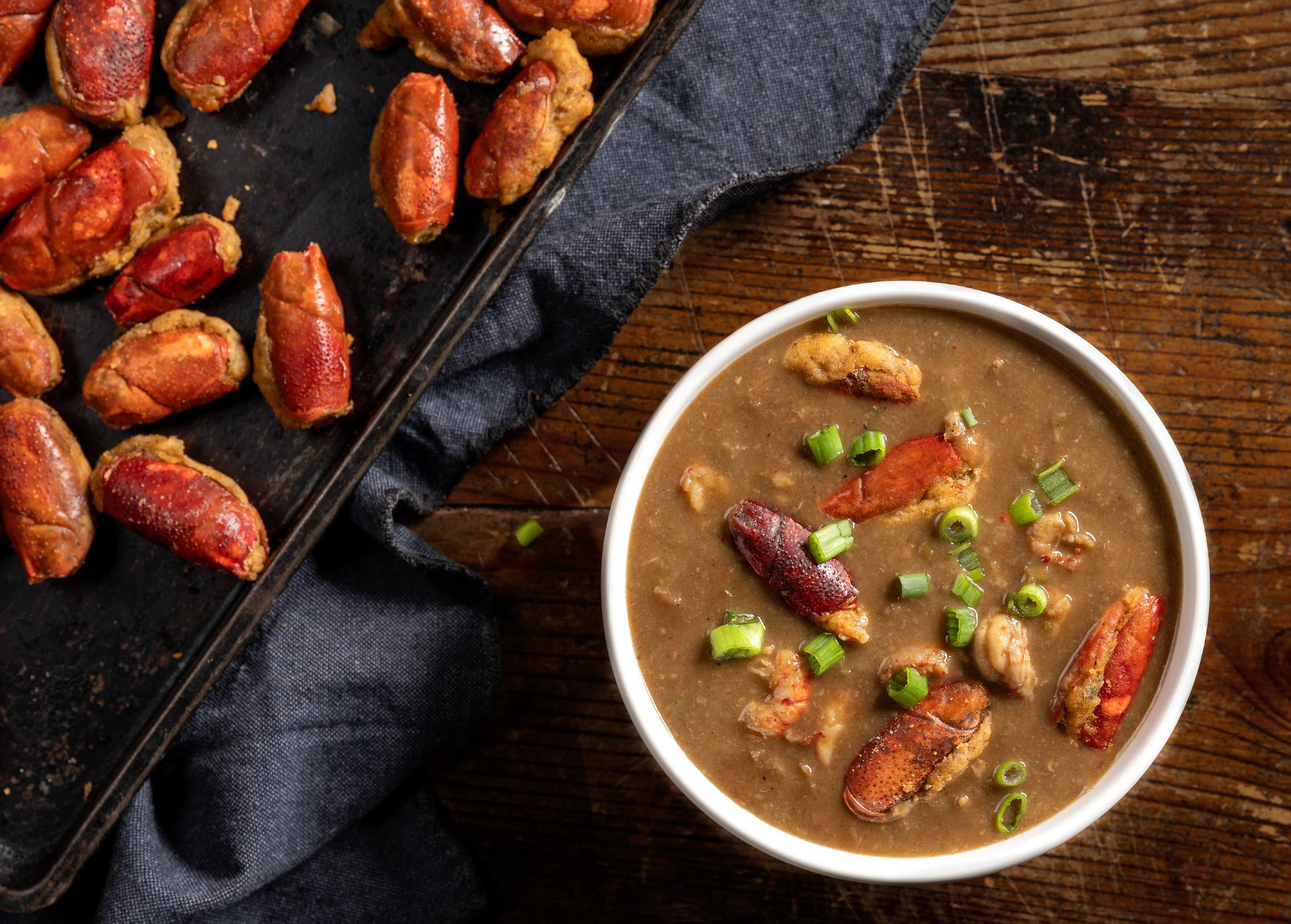
by Poppy Tooker
A soup you eat with your hands?
This concept, while shocking to Louisiana visitors, has been a commonplace activity for centuries here where crawfish bisque is a treasured, seasonal delicacy. Sometimes served over rice, the dark roux-based soup is gravy-thick, providing a rich accompaniment to the real prize: stuffed crawfish heads.
Just the word “bisque” can be confusing to the uninitiated. Louisiana bisque bears no resemblance to the classic cream-based version of the dish — said to date back to 17th-century France; in the French recipe, the iconic soup is always made with shellfish such as shrimp, crab, lobster or Europe’s freshwater “crayfish.” The seafood is puréed and strained to a velvety texture before being enriched with cream and fortified with sherry or brandy. The Louisiana version bears no resemblance to this, its French namesake.
Often found on restaurant menus from days gone by, today the Louisiana dish is mostly confined to home kitchens because of the intensive labor required in the preparation. Incredibly, by the time the crawfish heads land in a bowl of bisque, each one has been handled at least five times: First, during the peeling process when the heads are separated from the tails, then as they’re thoroughly washed before being stuffed.
Each stuffed head is rolled in flour and browned on a baking sheet. The browned heads are added to the soup pot and simmered briefly before serving. Finally, the lucky recipient spoons up a stuffed head, grabbing it with their fingers and using a spoon to scoop out the stuffing. Once the stuffed heads are eaten, many observe an amusing tradition of adorning their soup bowl rims with the empty crawfish heads.
Louisiana’s bisque origins are as murky as the swamp waters where the crawfish dwell. There is no mention of bisque in early recipe books. Neither 1885’s The Creole Cookery Book nor Lafcadio Hearn’s La Cuisine Créole, published that same year, make any mention of the dish. It is also omitted from the encyclopedic classic The Picayune Creole Cook Book . Crawfish bisque was rarely served in New Orleans restaurants, although it did appear seasonally at Madame Bégué’s famed establishment, and she included her version of the dish in Madame Bégué’s
Recipes of Old New Orleans Creole Cookery, published in 1900.
The real crawfish action has always centered in Breaux Bridge, where the Hebert Hotel played a central role. Opened in the 1920s, the hotel is said to be the first commercial establishment to include crawfish dishes in their offerings. Prepared by the hotel’s matron, Mrs. Charles Hebert, the menu included “crayfish cocktail, crayfish salad, crayfish pie, crayfish stew, crayfish patties, crayfish gumbo and crayfish bisque.” It was said Mrs. Hebert’s bisque was so remarkable, Herbert Hoover was compelled to travel by train from Beaumont, Texas to sample her famed dish during his presidency.
Crawfish bisque was a menu staple at New Orleans’ Bon Ton Café by 1953, when bayou country natives Al and Alzina Pierce featured it daily along with other special crawfish dishes. It remained one of their most celebrated menu items until the restaurant closed in 2020.
The New Orleans Jazz & Heritage Foundation has played a key role in introducing crawfish bisque to the world — thanks to the Baquet family, the owners of Li’l Dizzy’s Café, who are meticulous about the authenticity of everything (including the bisque and its recipe handed down through generations) that they serve at the Fest. While bisque doesn’t appear on their regular menu at the Esplanade Avenue eatery, it is a mainstay at the Fest, where three stuffed heads appear in every bowl. To pull that off, the Li’l Dizzy’s crew goes to work weeks in advance, stuffing more than 10,000 crawfish heads in preparation. Those stuffed heads are frozen until festival time and added to the bisque served at the Fair Grounds daily during the Fest.
Now, crawfish bisque is not a dish you want to make alone. Before crawfish tail meat was readily available by the pound, many bisques began with a whole sack of crawfish, and recipes calling for 10 pounds were commonplace. Generally, it takes six to seven pounds of boiled crawfish to yield one pound of meat. Despite the convenience of prepared Louisiana tail meat, at least four pounds of boiled crawfish also must be peeled to make a bisque that will serve approximately eight people. That’s because not only are the heads stuffed, but to give the bisque a deep crawfish flavor, the remaining
"What Rouses customers can depend on is that we always get the very best of what’s out there, and just like every crawfish season, we are the place to come for the best price and quality.”
– Denise Englade, Director of Seafood for Rouses Markets

shells must be boiled into a stock along with the vegetable parings used for seasoning.
When it comes to those stuffed heads, size matters. While cleaned frozen heads can sometimes be found for sale, canny bisque cooks patrol the tables at springtime boils,
scanning the discards for the very biggest heads. Taken home, cleaned and frozen, they are ready for bisque-making whenever you are. Some cooks display a sense of humor by leaving the crawfish whiskers and faces intact, but that is a departure from the
norm. If the idea of cleaning and filling all those crawfish heads does not appeal to you, the stuffing can be shaped into small balls known as boulettes, which are baked or fried, then added to the soup.
To really enjoy your own bisque, break the process into multiple days, prepping the heads and stuffing them in the first session, then boiling the stock and assembling the bisque while stuffing and baking the heads in another session.
Read this entire recipe before you begin so you can map out the strategy that works best for you. Remember: The vegetable trimmings from the stuffing and the bisque will be used to make a flavorful stock, so reserve them as you go.
Best of all, crawfish bisque freezes beautifully for months, so long after the laborious process is forgotten, you can treat your friends and family to a meal that will be long remembered.
CRAWFISH BISQUE
Serves 8 – yields 3 quarts
WHAT YOU WILL NEED FOR THE STUFFED CRAWFISH HEADS:
4 pounds boiled crawfish
¼ cup all-purpose flour (for the roux)
4 tablespoons vegetable oil (for the roux)
½ large onion, white or yellow, finely chopped (retain trimmings for stock)
½ large bell pepper, any color, finely chopped (retain trimmings for stock)
1 rib celery, finely chopped (retain trimmings for stock)
1 6-ounce can tomato paste
1 teaspoon dried thyme
1 teaspoon fine salt
½ teaspoon cayenne pepper
¼ teaspoon black pepper
½ cup plain bread crumbs
1 tablespoon chopped fresh parsley
3 green onions, thinly sliced
8 tablespoons (1 stick) butter, melted
½ cup all-purpose flour (to roll the heads in)
HOW TO PREP THE STUFFED CRAWFISH HEADS:
Peel the crawfish. Set aside the 40 biggest heads for stuffing. Chop the crawfish tails. (Reserve the other heads and any trimmings from the vegetables you will use for making stock; see recipe below.) Position a rack in the middle of the oven and preheat to 300°F.
In a Dutch oven or heavy-bottom pot over medium-high heat, add the oil and heat until it shimmers. Sprinkle the flour in the pan and stir constantly with a wooden spoon until the mixture becomes a dark brown roux. Add the onion, bell pepper and celery and cook, stirring occasionally, until the vegetables soften, about 5 minutes. Add the tomato paste and the crawfish tails and stir to combine. Reduce the heat to low and add the thyme, salt, cayenne and black pepper; stir to combine and cook for 10-15 minutes.
Add the bread crumbs, parsley, green onions and butter to the pot, and stir to combine well. Use this mixture to stuff each reserved crawfish head. Place the ½ cup of flour on a plate and roll the stuffed heads in it until lightly covered. Arrange the heads on a sheet pan. Bake for 15 minutes, turning once during baking. Remove from oven and set aside.

Remaining shells or heads from the 4 pounds boiled crawfish
Trimmings from the onions, celery, bell pepper, green onions and parsley that you use to make the stuffing and bisque sauce
1 bay leaf
1 gallon water
HOW
In a large pot, add the shells as well as the onion, celery, bell pepper and green onions trimmings and a bay leaf. Cover with the water, place over high heat and bring to a boil. Boil for 15 minutes. Strain and reserve the stock. Keep warm. (If not using right away, the liquid can be refrigerated for up to 3 days and frozen for up to 3 months.).
WHAT
¾ cup all-purpose flour (for the roux)
½ cup vegetable oil (for the roux)
1 onion, white or yellow, finely chopped
1 bell pepper, any color, finely chopped
3 ribs celery, finely chopped
3 quarts crawfish stock, warmed (see recipe above)
½ cup tomato sauce
2 bay leaves
2 tablespoons dried thyme
2 teaspoons fine salt
¾ teaspoon cayenne pepper
2 cloves garlic, finely chopped
2 cups crawfish tails
1 tablespoon chopped Italian parsley
40 stuffed crawfish heads (recipe above) Cooked rice
2 green onions, thinly sliced, for serving
HOW TO PREP THE FINISHED BISQUE:
In a Dutch oven or heavy-bottom pot over medium-high heat, add the oil and heat until it shimmers. Sprinkle the flour in the pan, and stir constantly with a wooden spoon until it becomes a dark brown roux. Add the onion, bell pepper and celery, and stir to combine. Stir in warmed stock, tomato sauce, bay leaves, thyme, salt and cayenne. Reduce the heat to medium and simmer
30 minutes. Add the garlic and simmer for 10 minutes. Then, add crawfish tails and parsley. Simmer for 5 minutes, adding more stock if it seems too thick.
Add prepared stuffed heads to bisque and simmer over low heat 10-15 minutes.
Serve in bowls over about ¼ cup rice with 5 heads per bowl and a sprinkling of green onion.

by Poppy Tooker
While there are many differing opinions about where Louisiana’s most famous dishes like gumbo and jambalaya get their names, étouffée’s origins are clear. Today, étuver is a commonly used French culinary verb that describes a braising method of tightly covering a pot and allowing food to slowly cook in its own juices — what Southerners commonly call “smothering.” Etuver is the modern spelling, but in old French, the same word was étouffer.
By the time the French-speaking Acadians arrived in Louisiana, their language was already evolving into a spoken dialect, guided by the Old French of their ancestors. No matter the spelling, the “r” was always silent. It’s easy to understand that when remembering the special “étouffer” greatgreat-great-grandmére made back in France; here in Louisiana, the dish itself became étouffée. While crawfish is by far the most famous étouffée, the same cooking method can be used on any variety of vegetables, meats and seafood. To call a simple chicken stew an étouffée would fall within bounds.
Yet, despite centuries of cooking in that manner, many believe the celebrated dish did not get its official name until the 20th
century. In the 1920s Mrs. Charles Hebert (of Hebert Hotel fame in Breaux Bridge) was renowned for her crawfish dishes. On the menu there, she served a crawfish courtbouillon many believe to be the forerunner of today’s étouffée. When Aline Champagne opened the RendezVous Café on Henderson Highway in 1947, she claimed to have learned how to make the dish directly from Mrs. Hebert. A delicious bit of origin lore states that when a Lafayette banker came into Champagne’s kitchen and asked what was cooking, she replied, “Mais, justement étouffée mes ecrevisse,” which translates to: “I’m just smothering my crawfish,” supposedly giving the dish its official name.
According to New Iberia native Chef Alex Patout, credit must also be given to Guidry’s
Levee Bar in Henderson, Louisiana. In the 1930s Guidry’s was known for its crawfish étouffée, which was given away to keep thirsty patrons drinking. Then, in the 1950s, the wives of the Breaux Bridge Fire Department created a sensation with their version, which was occasionally offered for sale. (Although retired, Chef Patout is still stirring up his own étouffée — and he delivers all the way to New Orleans. See profile on facing page.)
No matter its etymological origins, cooking étouffée has become a far easier process since peeled crawfish tails became widely available in the 1960s. But crawfish fat, a key ingredient in a proper étouffée, has become more elusive. Sweet, rich, briny crawfish fat really isn’t fat at all. Found in the crawfish heads, the fat is really the hepatopancreas, an organ that functions like a liver. That bright yellow/orange creamy substance is what compels eaters to “suck the heads.” Crawfish fat was available for sale in small containers until a few years ago, but it’s no longer legal.
Today, to properly thicken an étouffée gravy with that luscious fat, some crawfish peeling is required. To get the fat, stick your index finger into the crawfish head and you’ll be rewarded with about one-eighth of a teaspoon of fat from each shell. Accumulating a tablespoon or more may seem like an herculean task, but it is one well worth it for the final product. When purchasing peeled tails, make sure to select bags of crawfish with tails clearly coated in the brightly colored fat. After emptying the bag, thoroughly rinse the bag out with water, reserving the fatty liquid to enrich the étouffée.
For something so simple, there is much controversy regarding the preparation — especially when it comes to a roux. Purists will insist there can never be a roux in a true étouffée. Add a roux and the dish becomes a stew or a gumbo, they will purport. Some Louisiana cooks thicken their étouffées by whisking a tablespoon of cornstarch into a cup of water. Most recipes, however, call for a small amount of flour, either cooked with butter into a pale, golden roux or sprinkled over the seasoning vegetables and cooked until the raw-flour taste disappears. Creole étouffée served in New Orleans often features a bit of tomato, although Cajuns shun that idea — but everyone agrees that butter plays a key role in a rich étouffée.
Whether étouffée is a reward for your labors peeling crawfish after a boil or a quick, weeknight dinner prepared with peeled tail meat, it’s a meal that celebrates spring in all its glory and is best enjoyed during that season. Étouffée cannot be frozen, and the crawfish tails will taste fishy after several months in the freezer, so don’t wait. Now is the time to serve one of Louisiana’s finest heritage meals.
Serves 4
This recipe mirrors many versions of étouffée. Even the great Paul Prudhomme included a bit of flour in his, so proceed without fear!
WHAT YOU WILL NEED :
1 pound crawfish tails (and any available crawfish fat)
1 cup water
8 tablespoons (1 stick) butter
1 cup chopped onion, white or yellow ½ cup chopped celery
½ cup chopped bell pepper, any color
2 tablespoons all-purpose flour
4 thinly sliced green onions
2 tablespoons chopped Italian flat leaf parsley
1 teaspoon hot sauce
¼ teaspoon fine salt
1½ cups cooked rice, for serving
HOW TO PREP :
Remove crawfish tails from package. Add some of the water to the empty crawfish package, loosening as much of the yellow fat as possible. Reserve the rinse water.
In a 3-quart pan over medium heat, melt the butter. Add the onion and sauté until softened. Add celery and bell pepper, and continue cooking for 7-8 minutes.
Sprinkle the flour over the softened vegetables and continue cooking for 5 minutes. There will be no color change, but the flour will begin to smell toasty. Whisk in the rinse water and any additional water needed to reach 1 cup and bring to a boil, then reduce to a simmer. Add the crawfish tails and green onions. Cover the pot and cook over low heat for about 5 minutes. Stir in the parsley and season with hot sauce and salt. Serve immediately over cooked rice.

LEE BARNES’ CRAWFISH ÉTOUFFÉE
Serves 4
This version of crawfish étouffée was taught to me by my friend, New Orleans cooking teacher Lee Barnes. Lee insisted she had learned it from a Cajun-speaking gentleman who hailed from Breaux Bridge. It’s quite unorthodox in several ways but very delicious and so quick and easy. It comes together so fast that if you put the rice on before you start the étouffée, it can be ready before the rice is cooked.
WHAT YOU WILL NEED :
1 pound crawfish tails (and any available crawfish fat)
1 cup water
8 tablespoons (1 stick) butter
3 tablespoons tomato paste
1 bunch green onions, thinly sliced
1 garlic clove, finely chopped
1 teaspoon dried thyme
1 bay leaf
¼ teaspoon cayenne pepper
¼ teaspoon salt
1½ cups cooked rice, for serving
HOW TO PREP :
Remove crawfish tails from package. Add water to the empty crawfish package, loosening as much of the yellow fat as possible into the water. Reserve the rinse water.
In a 3-quart pan over medium heat, melt the butter. Whisk the tomato paste into the butter until smooth. Add the green onions; cook for 3 minutes to bring out the flavor of the tomato paste and to wilt the green onions a little. Add the garlic and cook about 30 seconds. Add the reserved water plus any additional water needed to make 1 cup and whisk until smooth. Add the thyme, bay leaf, cayenne and salt. Reduce heat to a low simmer and cook for 3-5 minutes.
Stir in the crawfish tails and cover tightly. Cook for an additional 3 minutes, then serve over cooked rice.


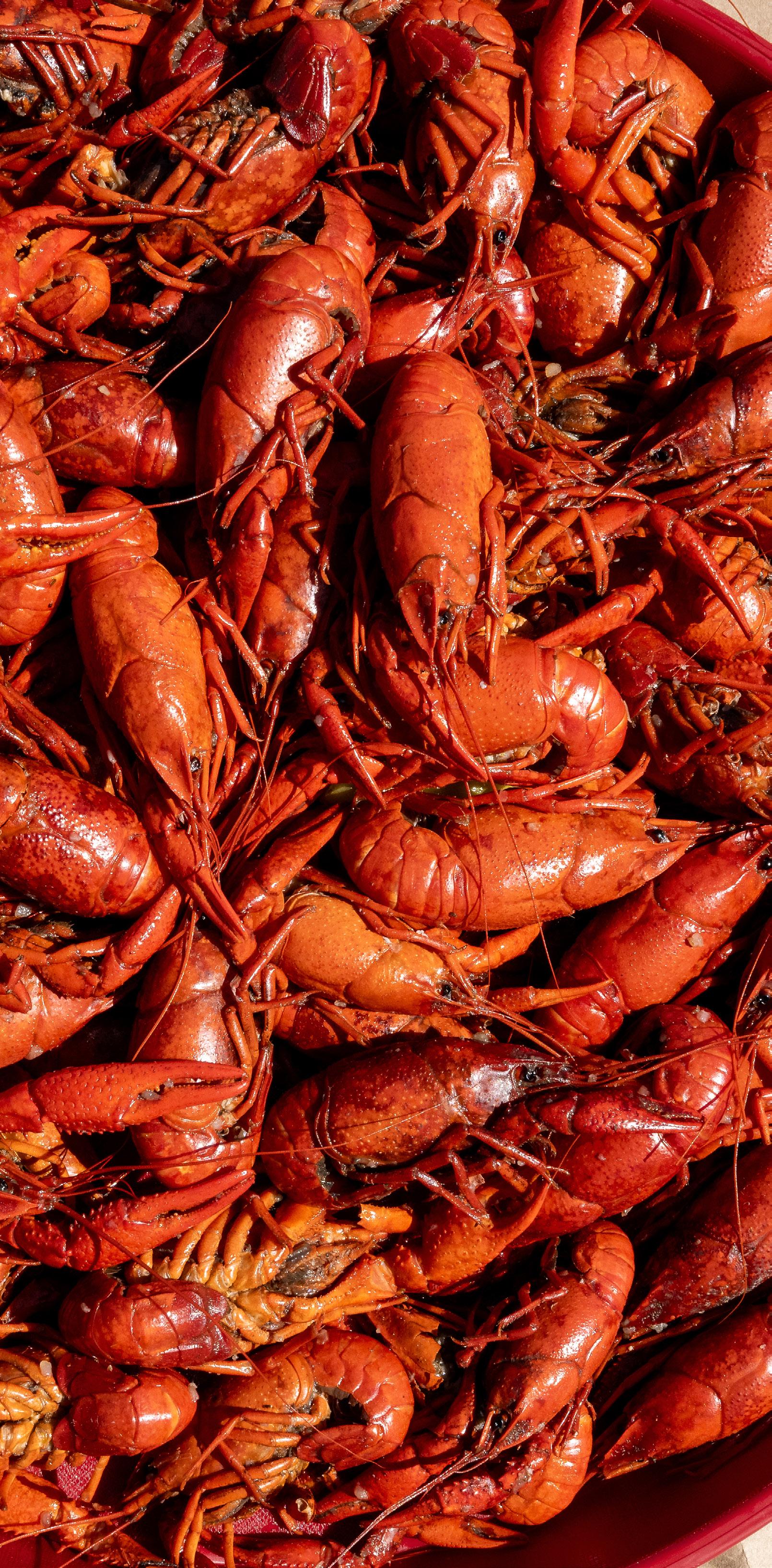
by Poppy Tooker
Even after nearly 50 years, Alex Patout is still educating the world about Cajun food — where it comes from, how it’s evolved, and where you can find the real thing nowadays.
“I was very fortunate to grow up in a state with two very distinct cultures, Cajun and Creole, that were not blended. Each one was separate and apart, with its own food, music, culture,” Patout said. “But now that has been basically lost. Today, we have ‘Louisiana cooking,’ putting Cajun and Creole together in one. From a national standpoint, I guess that’s fine; but from my standpoint, it’s an insult.”
Patout is one of the people responsible for helping to catapult Cajun cooking out of rural Acadiana and onto the national stage. Back in July 1979, Chef Paul Prudhomme opened K-Paul’s Louisiana Kitchen in the French Quarter. Just a few months later, in November 1979, Patout and his siblings opened Patout’s Restaurant in New Iberia.
K-Paul’s would go on to become one of the most celebrated restaurants in America, and Prudhomme became the nation’s most famous chef. Patout, meanwhile, was in New Iberia, cooking recipes he learned in his family’s kitchen and racking up his own regional, national and international acclaim.
“Paul blew open the door [for Cajun cooking nationally],” Patout said recently as he discussed how Cajun food went from regional recipes to global name recognition. “That was back at a time when food editors had a budget to travel and write. Back then, every food writer in America made a path to Chartres Street (home of K-Paul’s) to stand in line to get food they couldn’t find anywhere else. And after they’d eaten, the first thing out of Paul’s mouth was, ‘Now you need to go to the country to see Marcelle Bienvenu, Alex Patout and John Folse.’”
Many writers followed Prudhomme’s advice, showing up ready to eat in Lafayette, New Iberia, and Donaldsonville. Throughout the 1980s and ’90s, Bienvenu, Patout and Folse would appear regularly in prestigious publications. Food & Wine tapped Patout as one of the “Top 25 Chefs in America” and Esquire added him to its list of “Men Under 40 Who Are Changing America.”
Over the decades that followed, Patout authored books, cooked for a U.S. president and opened restaurants in the French Quarter, Miami and New Iberia.
Back then and still today, Patout views Cajun food from a more regional lens, rather than as one collective style of cooking, pointing out the differences across South Louisiana from the prairies to the coast. “Where Paul Prudhomme grew up in St. Landry Parish, that’s the land Cajuns, north of I-10,” Patout said. “I grew up in New Iberia, the seafood Cajuns. My food growing up was based on seafood.”
Cajun food — to terribly oversimplify a complex culinary tradition — is more rustic and intrinsically linked to the natural ingredients readily available in Louisiana’s marshes and coastal plains, while Creole cooking traditionally used more classic


Spanish and French techniques with African influences.
“I always think God worked a miracle,” Patout said, “when he put the Cajuns in South Louisiana with all the seafood and natural ingredients and said, ‘Go have fun.’”
Today, Patout is still having fun and still cooking, making big batches of crawfish bisque (sold by the quart with 20 stuffed heads), crab cakes, shrimp and okra gumbo, crawfish étouffée, eggplant dressing and many other specialties that can be ordered by texting him or connecting with him on Facebook or Instagram. (He also cooked all the crawfish recipes photographed for this issue of Rouses magazine.)
When Patout was growing up, gumbos, soups, stews and other rouxbased meals were always on the stove in kitchens across South Louisiana. Today, he is acutely aware that many families have little time to prepare long-simmering, multi-step recipes. So he keeps cooking, compelled to do everything he can to keep real Cajun food a part of modern home life.
“We’re trying not to lose our food culture,” he said.
Take crawfish bisque, for example, an endangered delicacy he considers the “No. 1” dish of Cajun cooking, but few people make it today because of its lengthy preparation time.
“I make crawfish bisque the hard, old way,” Patout said. “It is a seven-point process: First, cook the crawfish and peel them; second, clean the heads; third, make a roux; fourth, make crawfish dressing; fifth, stuff the heads;
sixth, make the crawfish bisque; and seventh, at the very end, you warm up the bisque and put the heads in.
“Now, nobody does that anymore,” he continued. “When you have a bowl of crawfish bisque, you are saying to yourself, ‘This is what it’s all about, this is Cajun.’”
So, if crawfish bisque is No. 1, what’s the No. 2 dish of Cajun cooking? “Well, that’s controversial,” he said with a laugh. “I say it’s courtbouillon. The way we grew up, when you made courtbouillon, we had to take fish heads and make fish stock. Then, you had to make a medium-colored roux and add tomato sauce and Ro-Tel tomatoes to the roux and cook that for four hours. By cooking the tomatoes and the roux together, over time it gets rid of the acid [in the tomatoes]. Then, add that to the fish stock, and we make a fish courtbouillon, with a firm fish, like drum or redfish, and serve it in a bowl with rice.
“But if you don’t start with a good stock, then you’re wasting your time,” he said.
Asked to name his favorite thing to cook, Patout hesitates. “I’d say, it’s whatever is in season. I make a great wild duck and oyster gumbo when it’s duck season. It’s a process but those two flavors come together masterfully.”
And when the spoon hits the bowl, that’s when you see the joy that gumbo can bring to friends and family, he said.
“This is what I call retirement,” Patout joked. “I go to work at 5 a.m., and the whole idea is to be done and having a drink by 2 p.m.”
“The 1980s was a great decade for eating out in New Orleans. Paul Prudhomme’s opening of K-Paul’s inspired many other Cajun chefs to show off their skills. A favorite of mine was Patout’s Louisiana Restaurant in the French Quarter. It had the most elegant dining room of all the Cajun restaurants, but the cuisine still embodied the homey deliciousness of South Louisiana family foods. I’m pretty sure the first time I had tasso was at Patout’s in their velvety white bean and tasso soup. I also loved the genuine crawfish bisque with the stuffed heads; when I was a kid you saw that everywhere, but by the 1980s, it was already becoming rare to find that preparation. But the Oysters Alexander, topped with a shrimp and chopped oyster mixture with parmesan cheese, was the most divine dish of all!”
– Patti Stallard


by Susan Langenhennig Granger
Crawfish Monica is many things to many people. It’s a Jazz Fest staple. A signature New Orleans dish with a well-known history. A trademarked brand that, like many famous labels, has spurred thousands of knockoffs. (Don’t be fooled by the online imposters.) But at its essence, Crawfish Monica is a love story.
Monica Davidson had only been married a few years when her husband, Chef Pierre “Pete” Hilzim, created a silken cream sauce and tossed it with crawfish and rotini pasta. The dish came together while Hilzim was cooking one evening at a friend’s house in the 1980s. When his wife inquired about the sauce, Hilzim, wise man that he is, dubbed it Crawfish Monica. What could be more romantic?
Little did either of them know that the world would soon fall in love with Monica as well. And that’s hardly an overstatement. Hilzim’s creation ranks among the
most popular foods at the New Orleans Jazz & Heritage Festival, a spring food fest that also happens to offer a little music. The eight-day event, which included a special Thursday performance by the Rolling Stones, drew nearly 500,000 people to the Fair Grounds last year. The 2025 Jazz Fest is set to open on Thursday, April 24, and will also span two four-day weekends. (Jazz Fest’s highest attendance came in 2001, when 650,000 people passed through its gates, according to The Times-Picayune — the vast lot of them likely making their way to the Crawfish Monica booth at some point.)
With six lanes stretching across a double booth in the festival’s Food Area II, the team behind Crawfish Monica has its game plan so dialed in that the staff has been known to ladle out an estimated serving a second in recent years, Davidson said. Speed is of the essence, as the lines can be 120-people deep at the Crawfish Monica tent. Davidson has been known to walk up and down the lines, chatting with customers and posing for selfies with fans who are thrilled to meet the Crawfish Monica.)
It's been more than 40 years since Davidson and Hilzim’s first appearance at Jazz Fest, a distance that Davidson, with a rueful smile, can hardly believe. “I was five when we started,” she joked.
In their first booth back in 1983, Crawfish Monica wasn’t on the menu, though. Another vendor was selling a pasta item, so Davidson and Hilzim couldn’t. Instead, they offered a shrimp dish. “We didn’t have any idea what we were doing,” Davidson said.

“We peeled 1,000 pounds of shrimp by hand. I remember thinking, ‘Gee, this is fun,’ but I love my husband.
“I think we made no money,” she added. “But in terms of experience, it was huge.”
Soon, Crawfish Monica would make its big public debut at the Fest, and the rest is creamy crawfish sauce history.
“We feel very fortunate that we have been able to add a dish to the culinary lexicon of the great food city that is New Orleans,” Hilzim said via email.
Betty Crocker isn’t a real person. Neither are Juan Valdez, Lorna Doone or even Mrs. Dash.
But Crawfish Monica is the real deal, a charming woman who is much more than just the namesake of a famous pasta recipe. That said, “It is nice to be a dish,” Davidson joked.
Born in Chile, she speaks three languages — English, Spanish and French (“three and half” if you count the years she studied German in school, she joked during a Restaurants Unstoppable podcast interview) — and earned a degree in linguistics from the University of California at Berkeley. Davidson comes by languages naturally; her mother is Chilean; her father, American. During her childhood, she attended school in four countries before landing in San Francisco.
Davidson was working in Macy’s management training program when she met Hilzim, a New Orleans native. “He told me he was going to marry me on our first date, and I thought, ‘Oh really?’” she said with a laugh.
Hilzim’s prediction would eventually prove true when the couple said their “I Do’s” in the 1980s. Then, like a good New Orleans native, he persuaded his new bride to move back to his old hometown.
Soon, Hilzim launched a company, Kajun Kettle Foods, to sell fresh pasta to local restaurants, while Davidson earned an MBA from the University of New Orleans. To show off their pastas to prospective customers, they needed sauces, so Hilzim got to work on those as well.
“Pierre said to me one day, ‘You should work with me,’” Davidson said, laughing. “I thought, ‘That’s a terrible idea. People should never work with their spouses.’”
Nonetheless, Davidson would put her business degree to good use at Kajun Kettle. Hilzim ran the kitchen; Davidson handled the marketing and many other duties. She was the one who trademarked the Crawfish Monica name.
Together, the couple grew the business; at its height, the company offered “more than 100 ready-to-serve savory soups, sauces, entrees and side dishes to the restaurant industry — all named Monica’s, as in Monica’s Jambalaya Base and Monica’s Country Style White Beans,” according to a 2007 Times-Picayune article.
Operating a Jazz Fest food booth is like an epic drama that unfolds over seven days. The stage: a fast-paced kitchen environment that demands the highest-quality ingredients and precise execution but takes place in a soft-sided tent with a dirt floor. The weather is always

an antagonist. Monsoon rains can turn the festival grounds into a mud wrestling ring.
Through it all, everyone keeps on cooking. “One of the areas back in the old booth, it got so hot you could lose a pound an hour sweating,” Davidson said, adding that Hilzim now installs an exhaust system to keep everyone from passing out. “It’s no longer a weight loss center,” she joked.
And then there are the perks. Before the festival gates even open, you might get to hear a megastar rehearse his entire act with nary a soul blocking your view.
Preparations for the festival begin in January for Davidson and Hilzim’s Big River Foods — the company they created for the festival operation. Twenty-two people work in the booth, including both their daughters, their attorney and scores of friends.
The good stuff is made from scratch on-site. Hilzim arrives early — often 7am — to get things going, and Davidson comes a little later to bring any supplies that they may have forgotten.
In the early days, Hilzim set up a line of burners inside the tent, but today, the batches are all made in big tilt skillets, Davidson said. (As the name implies, these commercial devices can cook large batches of food and then tilt to efficiently — and safely — transfer the hot stuff into other containers.)
Over the decades, Crawfish Monica — like Mango Freeze — has become synonymous with Jazz Fest. And writers far and wide have tried to boil its essence down to words, since the real recipe is a closely guarded secret.
A quick Google search for “Crawfish Monica recipe” dredges up thousands of results — none of which have the actual technique, not even the one that claimed to be “Chef Paul Prudhomme’s Crawfish Monica Recipe.” The acclaimed chef, now deceased, was a friend of Hilzim and Davidson; but no, he didn’t create the dish.
Bill Clinton, Barack Obama and Pope John Paul II are among the notable names who have scooped up some Crawfish Monica, as have Bill Murray and Francis Ford Coppola.
Many Louisiana foods are popular, but how does a dish go from being a favorite to being beloved? For Crawfish Monica, it took excellent timing, sweetened with a love story and spiced with a dash of mystery.
The combination of crawfish tails and pasta tossed in a creamy, spicy sauce is so popular, it has for years been served from a coveted double booth in Food Area 2 at the New Orleans Jazz & Heritage Festival.
“I always thought it was of its time, it was when he created it,” Judy Walker, former food editor of The TimesPicayune, said of the recipe created by Pierre Hilzim of Kajun Kettle Foods. “It was during the pasta craze of the ’80s.
“Of course, it has that real rich flavor profile that people love — the whole milk and cheese thing, and crawfish, which is also something people just love.”
And all the creamy yumminess comes with a romantic origin tale: Hilzim created the dish at a dinner party and named it after his soon-to-be wife, Monica Davidson. “It was always a love letter to his wife,” Walker said.
The dish got so popular, Kajun Kettle stopped selling other foods for the festival and just sold Crawfish Monica, Walker said. And Crawfish Monica’s namesake became a bit of a celebrity herself.
In 2015, Walker wrote in The TimesPicayune that the couple literally sold tons of the pasta at the Fest, and that Davidson was there to take selfies and even sign autographs. “It’s really like being a rock star,” she told Walker back then.
While the business owners welcomed the public’s devotion, they kept a secret from them: The recipe. “They protected it,” Walker said, making it a dish people anticipated each spring at the Fest.
Walker can’t recall how many times she’s written about the dish in the more
than a decade she spent as food editor but, in all those years, she says she’s never tried to re-create it.
Still, she understands why folks want to make it at home. “It’s in that category of good dishes that can feed a lot of people,” she said. “It’s in that New Orleans party food world.”
Today, it remains a cultural phenomenon. Do a search for the recipe online and you’ll find dozens and dozens of copycat versions. We thought we’d jump on that bandwagon and give it a try as well. Is the recipe here exactly the same? No. But is our Monica-inspired dish delicious? Yes, ma’am.
Ann Maloney
Recipe developed by Ann Maloney
Serves 8-10
This creamy, spicy pasta dish was inspired by the beloved Crawfish Monica sold each spring at the New Orleans Jazz & Heritage Festival. If the crawfish tails are peeled and ready, you can knock this out in 30 minutes, making it an easy weeknight supper. It’s also great for parties. If you use the white pepper and Creole/Cajun seasoning, the dish will have a light spicy tingle. Omit the pepper if you want it milder. If you use frozen crawfish tails, thaw and drain them, but do not rinse. If you use tails from a boil, consider omitting or reducing the salt.
1 cup half-and-half
1 cup heavy whipping cream
1 pound rotini pasta
4 tablespoons (½ stick) unsalted butter, or 4 tablespoons olive oil
3 scallions, chopped, plus more for serving
2 tablespoons chopped Italian parsley (optional), plus more for serving
2 large cloves garlic, minced
½ teaspoon white pepper, optional
½ teaspoon Creole/Cajun seasoning
¼ teaspoon dried thyme
¼ teaspoon fine salt
1 pound crawfish tails with fat, thawed and drained if frozen (don’t rinse)
¼ cup dry white wine, such as sauvignon blanc, divided
1 tablespoon cornstarch
1 tablespoon Worcestershire sauce
¾ cup freshly grated Parmesan cheese

ARROW-CIRCLE-RIGHT Dagostino pasta is made the old-fashioned way in a New Orleans pasta factory, using a centuries-old “delicate“ method developed in Palermo, Sicily. Small batches are extruded through bronze dies, carefully looped over wooden rods and air-dried in wooden cellars, creating a pasta known for its delicate texture and classic flavor. Along with crawfish-shaped pasta, they also make alligator and fleur-de-lis pasta.


To a medium saucepan over medium heat, add the half-and-half and heavy cream and cook until slightly reduced, about 10 minutes. Allow to simmer with tiny bubbles forming around the edges, but do not boil.
In a large pot over high heat, bring lightly salted water to a boil. Cook the pasta according to the package directions for al dente, about 7 minutes.
In a large, deep-sided skillet over medium to medium-high heat, melt the butter or heat the olive oil. Add the scallions and cook until softened, about 2 minutes. Add the parsley, if using, and the garlic, and cook until fragrant, about 30 seconds. Add the white pepper (if using), Creole/Cajun seasoning, thyme and salt; stir and cook for another minute. Add crawfish tails and half of the wine, and stir to combine. Cook for about 2 minutes to heat the tails.
To the remaining wine add 1 tablespoon of cornstarch; whisk to create a slurry. Add the cornstarch slurry and the Worchester sauce to the dairy mixture and whisk until slightly thicker, about 3 minutes. Add the dairy mixture to the skillet and stir to combine with crawfish and vegetables.
In a large serving bowl, add the hot pasta, pour the sauce over it and toss until the pasta is well-coated. Sprinkle with Parmesan and toss to combine. Sprinkle with more scallions or parsley when serving, if desired.
by Ann Maloney

Ihave often heard folks say the thing they like most about a Thanksgiving feast is digging into leftovers the next day. I feel the same way about a crawfish boil.
I cherish gathering around the table with family and friends to devour the spicy tails, potatoes, corn and sausage, but my husband and I have a secondary ritual that’s just as important to us.
When everyone is satiated, we start peeling for another day. We recap the gathering as we transfer the spoils of the boil into containers destined for the refrigerator and the freezer. How delightful to freeze some of the tails and have crawfish handy in the dog days of summer.
When I tell people how much I love the leftovers, they often laugh and say: What leftovers? But if you don’t have leftovers, you’re just not boiling enough.
Obvious day-after recipes, such as an étouffée, are a treat, but your options are only limited by your imagination, said Mike Westbrook, director of Rouses Market deli, cold cuts and sushi.
The prepared foods at Rouses reflects that sky-is-the-limit philosophy. The deli sells Crawfish Riley pasta dishes, Natchitoches mini crawfish pies, and a crawfish corn and bell pepper soup. The sushi case features a variety of rolls made with crawfish. And Rouses is always on the lookout for other clever ideas, he said.
“This year, we have a crawfish étouffée egg roll coming out,” he said.
When I caught up with Denise Englade, director of seafood for Rouses Markets, I realized that when it came to crawfish, I’d met a kindred spirit.
“The goal isn’t to run out,” Englade said of boiling at home. “At least my goal isn’t to run out.”
Englade, who was born in Louisiana and has been in the seafood business on the West Coast and in her home state for more than 20 years, works with as many as 30 crawfish suppliers to ensure Rouses can meet the demand for the 2.5 million pounds of boiled crawfish it sells each year. The
stores also stock about 400,000 pounds of frozen tail meat per year, the vast majority of which is from area crawfish farmers and harvesters, she said. It’s easy to tell if the tails are local, because purveyors are required to list the origin on the label.
Most crawfish are harvested between December and June, with peak crawfish season running from March to early May, she said. And, unlike last season, which was plagued with drought — and thus scarcity — the 2025 season is starting off well. Rouses began selling a limited amount right before Thanksgiving and, if all goes well with the Atchafalaya Basin harvest, the grocers will stretch the season to the Fourth of July.
But how do you know how much boiled crawfish you’ll need for your gathering? The LSU Ag Center estimates a 30-pound sack of crawfish should yield about five pounds of meat, though this varies with the size of the creatures. Most adults will eat about a half pound of tail meat, according to experts. If you’ve got fast-peeling, big-eating locals in your party, you’ll need to account for them.
“I look at who is coming over,” Englade said. “Then I make sure I’m boiling enough to have five or six pounds left for me. I need leftover potatoes, crawfish and corn so I can make my after-the-boil chowder.”
When buying her crawfish, she estimates one pound of live crawfish for each child and about three pounds for teens and adults, with two medium potatoes, a half ear of corn and a few inches of sausage for each person.
If refrigerating leftover tails, use them within a couple of days. Potatoes, corn and sausages can be refrigerated for up to four days. All of these foods can be placed in airtight containers and frozen for up to three months.
Englade points out that commercially packaged, vacuum-sealed frozen crawfish tails are unseasoned. Some include the flavorful fat from the mudbugs; some do not.
“I boil and peel mine because I want the fat and the boiled crawfish tail for flavor,” she said. “I use my Seal-a-Meal to freeze the tails in quart or gallon [bags] for when I can’t get crawfish at all.”
I don’t have a vacuum-sealer, so we tightly pack our tails into resealable bags, squeeze out as much air as possible, add just enough
water to ensure the bag is completely filled and freeze into a solid block. (Englade doesn’t use water because, she said, it can affect the tail meat texture.)
If the tails are still warm, place the filled bags in a mixture of half-ice, half-water for about 30 minutes to chill, and then freeze them.
If you want to freeze tails for longer than three months, you should boil them without salt or seasoning and rinse off the yellow fat before vacuum-sealing, according to the LSU Ag Center. After three months, the fat can go rancid, even in the freezer.
While Englade is partial to her crawfish boil chowder and traditional bisque, Westbrook — when gifted with leftovers from a crawfish boil — likes to whip up a quesadilla of tails, sausage, corn, peppers and onion the next day.
Below you’ll find other suggestions for using traditional leftovers that might jumpstart your imagination.
ARROW-CIRCLE-RIGHT Where to start? Étouffée, bisque and chowder, of course. Lots of folks add them to their gumbo, too. We use them in both hot or cold crawfish pasta dishes, turnovers and pies. We make pan-fried crawfish cakes similar to crab cakes. We slip them into grilled cheese sandwiches, frittatas, stuffed mirlitons and rice dressing. Or, try this: Serve a cold mayonnaise-based crawfish salad piled onto a toasted pistolette à la lobster roll.
ARROW-CIRCLE-RIGHT We always throw in an extra bag of new potatoes. Spicy spuds make the best potato salad, mashed potatoes (with softened boil garlic, too!) or hash browns. Try smashing them and roasting them until crisp. Add them to frittatas, omelets or casseroles.
ARROW-CIRCLE-RIGHT Corn picks up spice fast, so boiling it with crawfish turns it into a sweet and spicy flavor booster. Love a creamy corn soup? Imagine one made with spiced corn and potatoes. Scrape the corn off the cob and add it to a homemade salsa, or sprinkle it on tacos or
nachos. Stir it into cornbread or succotash, add it to your next stir-fry or whip up a batch of fried corn fritters.
ARROW-CIRCLE-RIGHT If you’re concerned that the fat from sausage will coat the mudbugs, wait until the crawfish have been pulled out, then drop links into the water to pick up the heat. Slice them and put them in red beans, stews or a penne pasta bake, or use them as a pizza topper. Sauté the links with onions and peppers. My husband likes to slice them open, run them under a broiler until crisp and make a crawfish boil sausage po-boy.
ARROW-CIRCLE-RIGHT Most of us pitch the onions used to flavor the crawfish boil, but I sometimes chop them and use them in soups, étouffées, sauces and gravies. (I’ve done the same with celery and bell peppers that I’ve softened in a boil.) I’ve also caramelized them and made a spicy onion soup.
ARROW-CIRCLE-RIGHT Garlic boiled in the spicy water is like gold in our household. We always throw in extra heads so we can blend some with butter and herbs to make a delicious spread. Much of it we squeeze out of the cloves and transfer to a resealable bag, then flatten and freeze it so it stores easily, and we can break off chunks anytime we want to use it in recipes calling for minced or pressed garlic.
Englade and I both love to experiment.
I add whole chickens to the boiling pot after the crawfish come out and use it to make spicy chicken salad, noodle bowls and sandwiches.
“Have you ever tried turkey necks?” she asked. “Oh my God, they are so delicious.” Rouses experienced crawfish boilers have instructions, or codes, not only for turkey necks, but chicken feet and turkey legs and wings. Englade has also experimented with pineapple, peaches and sweet potatoes — Brussels sprouts and mushrooms, too.
I couldn’t agree more with her selections. I love using these add-ins as leftovers, too. Try a pineapple salsa made with the spiced
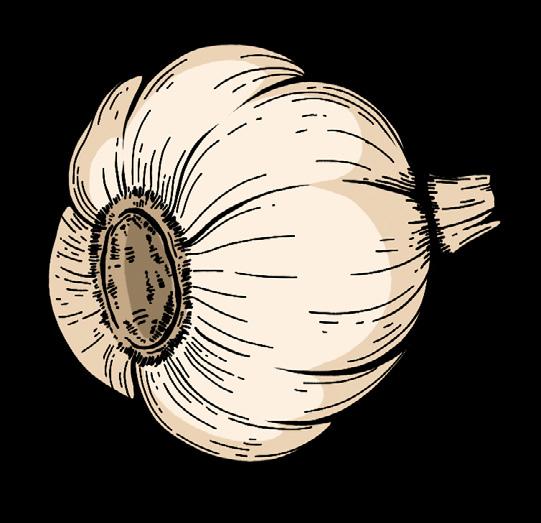
When we’re boiling mudbugs, we always throw in a half-dozen heads of garlic and boil them until they are soft and infused with the boil water’s spices. We eat some with the boil, squeezing it out of the cloves onto potatoes and corn. If there are any leftovers, we place it in an airtight container, refrigerate it and use it in pastas, stir-fries, soups, sauces and gravies — any recipe that calls for minced garlic. We also mix some with softened butter and herbs to make a garlic butter to enjoy with pasta or rice, or to spread on bread. The softened garlic and garlic butter also can be frozen (see Storage).
ARROW-CIRCLE-RIGHT To get softened garlic with a spicy kick, add whole heads of garlic to your next crawfish boil and allow them to cook until softened. You can also make them on your stovetop. Place a saucepan on the stove, and add the garlic heads and enough water so the garlic floats. Liberally season the water with a couple of tablespoons of liquid crab boil. (Turn on the stove vent and/or open a window to ventilate the kitchen.) Bring to a boil and then lower the heat and partially cover, cooking at a lively simmer until the garlic is very soften, about 50 minutes. Watch the pot, adding more water as needed. Drain, let cool to the touch and then squeeze out each clove into a small bowl. Discard the skins or freeze them to add to your next homemade stock.
ARROW-CIRCLE-RIGHT You can also soften garlic by roasting it: Preheat the oven to 450°F. Cut the top quarter off of the heads of garlic. Drizzle each with 1 tablespoon of olive oil. Wrap in aluminum foil, place on a small sheet pan and roast for about 50 minutes, or until the cloves are very soft and darkened to a caramel color. Unwrap; let cool to the touch and then squeeze out each clove into a small bowl. Discard the skins.

fruit or a duxelles spread made with boiled mushrooms.
Something else Englade and I have in common? We don’t always wait for a boil.
If you have an outdoor stove or a wellventilated kitchen, consider making a bottle of liquid crab boil a go-to pantry item. When the mood strikes, turn on the vent (and/or crack a window) and add some to a pot of salted water to get those spicy potatoes, ears of corn and heads of garlic anytime.
“I’ve done that,” Englade said, but she takes it a step further. “I might buy 10 pounds of live crawfish and do it in my stock pot,” she said. “I open the two doors and turn the vent on. And everybody chokes when they walk in.”
Sometimes you have to suffer for your art.
If you’ve enjoyed the super-cheesy stuffed Crawfish Bread at the New Orleans Jazz & Heritage Festival, you’ll love this openface garlicky crawfish bread, too. Instead of a bread dough, we slice open a loaf of French bread, spread garlic oil on the surface and then load it up with a mixture of crawfish tails, scallions and two kinds of cheese. The loaves can then be sliced into appetizer-size portions for parties or into entrée-size servings for a meal with a crisp green salad. We use a whole head of garlic, but if you prefer a milder flavor, cut that in half. This recipe is ideal for when you have leftover tails and boil-softened garlic, but it also can be made with frozen tails and roasted garlic. Keep in mind that the crawfish and garlic from a boil may pick up salt and that the cheese is also salty, so only add salt to the mixture after doing a taste test.

NOTE: If using unseasoned, frozen crawfish tails, place the thawed tails in a colander to allow any liquid to drain; do not rinse.
If using frozen tails and roasted garlic, you may wish to increase the Creole/Cajun seasoning and/or salt in this recipe.
SERVINGS: 4 (6-inch pieces) to 12 (2-inch pieces)
MAKE AHEAD: The softened garlic can be made up to 2 days in advance.
STORAGE: The crawfish bread is best the day it’s made, but leftovers can be refrigerated for up to 3 days. Reheat in a 350°F oven until warm, about 5 minutes, and run under a broiler for 1 minute, if desired.
Softened garlic or garlic butter (see suggestions above) can be refrigerated for up to 2 days; or it can be placed in an airtight container and frozen for up to 3 months.
Tip: If you put the garlic or garlic butter in
a resealable bag, flatten it and freeze it — that way, you can easily break off chunks as needed.
1 10- to 12-inch loaf (8 to 10 ounces) French bread or baguette
1 head garlic, boiled or roasted until softened (see suggestions in sidebar)
¼ cup extra virgin olive oil, plus more as needed
3 cups (1 pound) crawfish tails, thawed and drained, if frozen (never rinse)
2 scallions, thinly sliced, plus more for serving
2½ cups (12 ounces) coarsely shredded provolone, divided
1 cup (4 ounces) coarsely shredded sharp cheddar cheese
½ teaspoon Creole/Cajun seasoning, plus more as needed
¼ teaspoon fine salt (optional)
Position racks in the middle and upper third of the oven and preheat to 425°F.
Slice the bread in half lengthwise and open like a book. Gently remove a bit of the soft interior of the bread halves to create a roughly 1-inch trough. (You can place this soft bread you’ve removed in the oven to crisp and then crush it into bread crumbs for another use.) Place the bread halves on a parchment-lined sheet pan.
In a medium bowl, combine the softened garlic and olive oil. Brush the mixture lightly and evenly over the surface of both bread halves. The idea is to add a thin coating of garlic oil to the bread, not to soak the bread in oil — but add more oil if needed.
In the same bowl, combine the crawfish tails, scallions, 1 cup of the provolone, all of the cheddar and the Creole/Cajun seasoning, and mix until well-combined.
In a medium pot over medium heat, heat crawfish tail mixture just until the cheese has melted and coated the tails. Taste and add salt, if needed. Spoon the mixture evenly between the bread halves, gently pressing it into the bread. Sprinkle the remaining provolone over the bread, covering the surface as well as possible.
Bake on the middle oven rack for 5 to 8 minutes, or until the cheese is melted.
Turn the broiler to high and transfer the pan
to the upper rack; broil until the cheese starts to bubble and turn golden brown in spots, 1 to 2 minutes. Watch carefully, because the cheese can go from bubbly to burned very quickly.
Slice into desired serving sizes and sprinkle with sliced scallion, if desired.
We love these crisp, savory turnovers because they look fancy but are so easy to make, especially if you have leftover crawfish tails. Store-bought puff pastry dough delivers a flaky crust and makes these turnovers pretty enough for a cocktail party, but we love to make a big batch and keep them in the freezer, so we can slip them in the oven or air fryer for a crawfish treat when mudbug season is just a memory. Use fresh onion, bell pepper and celery, or use seasoned vegetables pulled from your next crawfish boil for even more flavor; adjust your seasoning as needed.
NOTE: We used Pepperidge Farm Puff Pastry, but commercial puff pastry dough weights and shapes vary, so you may have to adjust the recipe to suit the brand you choose. If you end up with extra filling, don’t fret. It’s delicious served warm on crisp French bread or wrapped in a flour tortilla as a cook’s treat.
SERVINGS: Makes 24 turnovers
STORAGE: Refrigerate baked turnovers for up to 2 days; reheat in a 350°F oven until warmed through, about 5 minutes. To freeze, place uncooked turnovers on a parchment-lined sheet pan and freeze until solid, at least 4 hours or overnight. Transfer the turnovers to an airtight container, and freeze for up to 3 months. To bake or air-fry from frozen, add about 2 to 3 minutes to the recipe cooking time.
4 tablespoons (about 2 ounces, or ½ stick) unsalted butter; olive oil may be substituted
1 medium yellow or white onion (1 cup, or 8 ounces), finely chopped
½ medium bell pepper, any color (¼ cup, or 2 ounces), finely chopped
1 rib celery (about ¼ cup, or 2 ounces), finely chopped
4 ounces chopped canned tomatoes
½ teaspoon Creole/Cajun seasoning, plus more as needed
1 pound (about 3 cups) crawfish tails and fat, thawed and drained if frozen (do not rinse)
¼ teaspoon fine salt (optional)
2 tablespoons cornstarch
¼ cup (4 ounces) water, broth or white wine
2 tablespoons chopped scallions
All-purpose flour for rolling out the pastry
2 sheets (17 ounces) puff pastry dough, such as Pepperidge Farm, thawed
1 large egg
1 tablespoon water
HOW TO PREP:
Position a rack in the middle of the oven and preheat oven to 400°F. If air-frying, set the air fryer to 375°F and preheat for about 5 minutes. Line a sheet pan with parchment paper and set aside. If using an air fryer, also lightly grease the basket or tray.
In a large skillet over medium heat, add the butter, onion, bell pepper and celery and cook, stirring until the vegetables are soft and golden, 6 to 8 minutes. (If using vegetables softened in a crawfish boil, cook until just warm and the butter has melted.) Add the tomatoes and Creole/Cajun seasoning and cook, stirring occasionally,
for about 5 minutes. Add the crawfish tails and cook for about 3 minutes, stirring occasionally. Taste and add salt, as needed.
In a small bowl, dissolve the cornstarch in the water/broth or wine, and mix to make a slurry. Add the slurry to the skillet and stir, cooking until the mixture thickens, about 3 minutes. Add the scallions and stir to incorporate. Remove from the heat and cool for about 10 minutes. You should have about 3½ cups, or 28 ounces.
On a lightly floured surface, unfold the pastry sheets and, using a lightly floured rolling pin, roll the dough until the folds are smooth and the dough is about 10" x 14". Cut each sheet into 12 equal squares, a touch over 3" x 3" each.
For each turnover, place about 2 tablespoons, or 1 ounce, of the crawfish mixture on the pastry square. Fold one corner over the filling diagonally to meet the opposite corner to form a triangle, then seal the edges by pressing down with the tines of a fork. If the dough is not sealing well, lightly dampen your fingers and gently press the edges, but do so sparingly. It is ok to stretch the dough slightly to cover the filling, but to prevent the filling from bursting out of the pastry during baking, do not overfill.
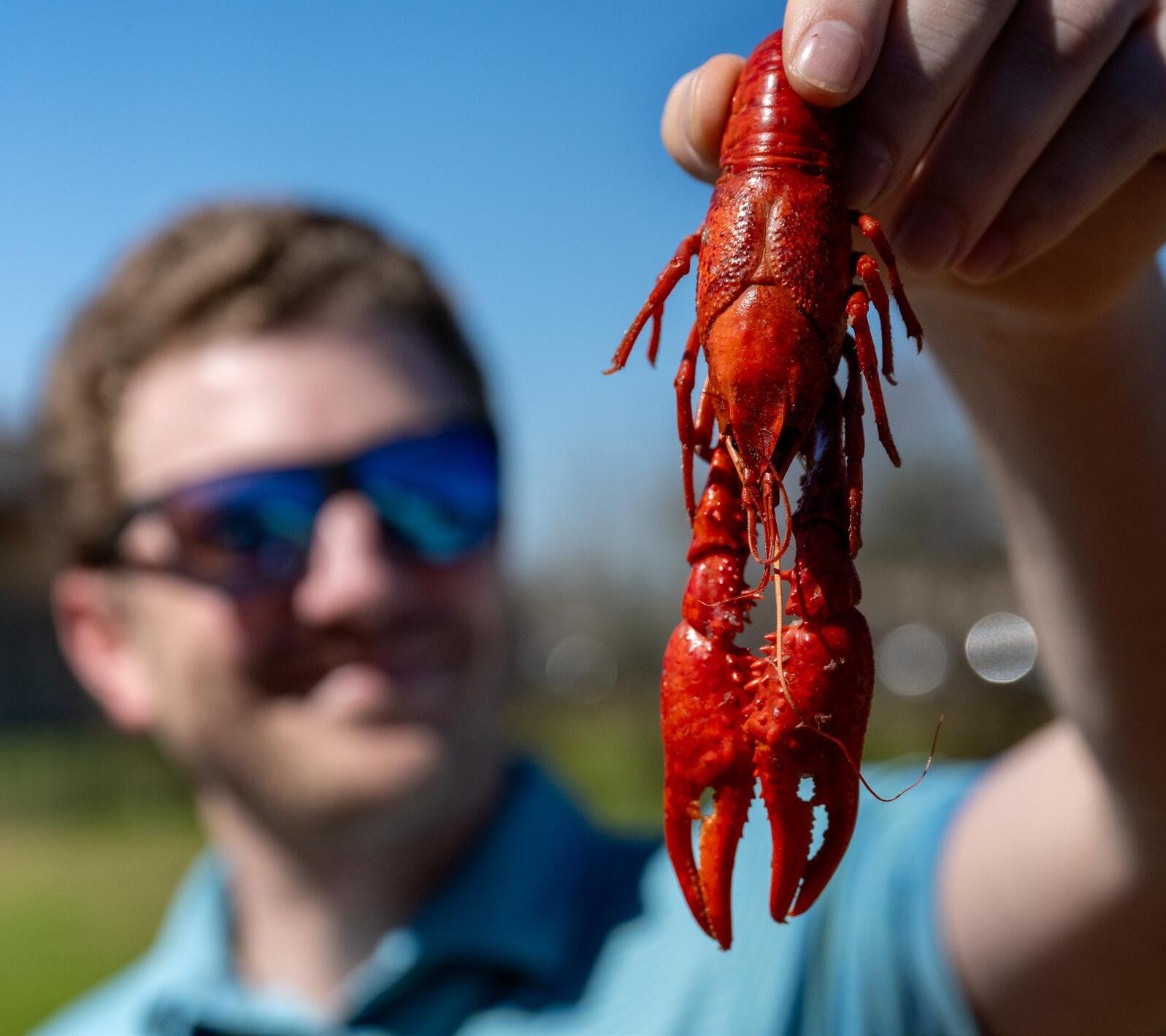
Transfer the turnovers to the lined sheet pan as they are filled, leaving 1 inch between each. In a small bowl, whisk the egg with water and lightly brush the surface of each turnover with the wash, sprinkle with additional Creole/Cajun seasoning if desired, and, with a sharp knife, cut a small slit in the top of each. (If freezing some or all of the turnovers, at this point freeze them as directed; see Storage above).
If baking immediately, place the sheet pan in the preheated oven and bake turnovers for 20 minutes, or until golden brown and warmed through.
If air-frying, add the turnovers to the basket or tray, leaving at least 1 inch of space between them, and air-fry turnovers in batches for about 12 minutes, or until golden brown. Refrigerate the remaining turnovers until ready to air-fry. Transfer the cooked turnovers to a platter and repeat until all turnovers have been cooked.
Let the turnovers rest at least 5 minutes before serving, because the filling will be very hot; serve warm or at room temperature.
Get all of your favorite crawfish boil flavors in every bite of this luscious, deep-dish pot pie. The amount of spice needed for the filling will vary, depending on whether all or some of the tails, potatoes, sausage, corn, onions, celery and bell pepper have been first cooked in a boil’s spicy water. If you use unseasoned frozen tails and fresh or more mildly cooked ingredients, you may want to add more Creole/Cajun seasoning and salt than the recipe calls for. For best results, the pie should be filled and baked immediately unless you plan to freeze it (see Make Ahead below). Take note: This pie must sit for at least 45 minutes when it comes out of the oven before serving, or it will be too loose to cleanly slice.
This recipe makes a generous 7 cups of filling, enough for one 9" x 2½" deep-dish pie or two regular pies. The dough recipe is for a double crust 9" x 2½" deep pie, but any favorite pie dough recipe will work here.
SERVINGS: 6 to 8
STORAGE: The baked pot pie can be refrigerated for up to 4 days. To freeze a whole, unbaked pie, place the pie on a sheet pan, uncovered, and freeze until the exterior is frozen, about 4 hours. Wrap it in two layers of plastic wrap, then wrap it in foil or place it inside a resealable airtight container to freeze. To bake, thaw in the refrigerator overnight and bake as directed.
You can freeze the dough itself by forming it into a flattened disk, or you can place it in the pie pan, crimp the edges and freeze it unwrapped until hardened, then wrap well and freeze. Thaw it overnight in the refrigerator before re-rolling it out/ filling the crust.
To freeze pie slices, bake and then fully chill the whole pie, 4 hours to overnight. Slice the chilled pie, wrap each slice in plastic and then foil, and freeze for up to 3 months. To heat the slices, thaw in the refrigerator overnight and then reheat in a 350°F oven, lightly covered, until warmed.
The pie is thick, so it’s best to use an instant-read digital thermometer to see if the filling is warmed through.
MAKE AHEAD: This pie must sit for at least 45 minutes before serving, or it will be too loose to slice.
WHAT YOU WILL NEED FOR THE CRUST:
3 cups all-purpose flour
1 teaspoon fine salt
12 tablespoons (1½ sticks) cold, unsalted butter, cut into small pieces
4 tablespoons (½ stick) vegetable shortening ½ cup ice-cold water, plus more as needed HOW TO PREP THE CRUST:
In the bowl of a food processor, add the flour and salt (if using salted butter add only an ¹⁄₈ teaspoon of salt); pulse several times to combine. Add the butter and shortening and pulse until the flour is a mixture of peasize pieces, with no large chunks of butter or shortening. Drizzle the water over the flour a little at a time and pulse until the dough just starts to come together.
Lightly flour a work surface and transfer the dough to the surface. Gently shape the dough into two 6-inch disks. It’s OK if there are tiny bits of visible butter, but there should be no dry flour. The dough should
feel fairly smooth. Wrap each disk tightly in plastic wrap and refrigerate for at least 4 hours or up to 3 days.
WHAT YOU WILL NEED FOR THE FILLING:
2 tablespoons unsalted butter or olive oil
1 medium onion (8 ounces), chopped
2 celery ribs (4 ounces), chopped
¼ large bell pepper (3 ounces), any color, chopped
2 cloves garlic, minced or softened
6 tablespoons all-purpose flour
2 cups seafood or chicken broth, preferably unsalted
¾ cup half-and-half or heavy cream
Scant 3 cups (1 pound) crawfish tails, thawed and drained if frozen (do not rinse)
¾ cup (4 ounces) chopped smoked sausage
¾ cup (4 ounces) chopped cooked new potatoes, peeled or unpeeled
¾ cup (4 ounces) corn kernels
1 tablespoon Creole/Cajun seasoning, plus more as needed
¼ teaspoon fine salt, plus more as needed
¹⁄₈ teaspoon cayenne pepper, plus more as needed
2 scallions, thinly sliced (optional)
1 egg
2 deep-dish pie crusts, homemade (see related recipe) or store-bought/frozen
HOW TO PREP THE PIES:
Position a rack at the lowest position and preheat the oven to 400°F.
In a large saucepan over medium-high heat, melt the butter (or heat the oil). Add the onion, celery and bell pepper and cook, stirring occasionally, until softened, about 3 minutes. Add the garlic and cook until fragrant, about 30 seconds. (If using vegetables softened in a crawfish boil, you can chop and sauté them in butter or oil and then proceed to the next step.)
Add the flour to the vegetables and stir until well-coated and the flour just starts to brown, about 3 minutes. It’s OK if bits stick to the pan.
Whisk in the broth, half-and-half (or heavy cream) and cook, stirring and scraping up any stuck-on bits, until well-combined. Bring to a boil and cook at a lively simmer for a few minutes, adjusting the heat and stirring occasionally to prevent sticking. The sauce should thicken and turn glossy.
Add the crawfish tails, sausage, potatoes and corn, and stir to combine. At this point, when you drag your spoon through the mixture, you should get a glimpse of the bottom of the pot before the mixture comes back together. If it is too thin, cook it a few more minutes; if too thick, add more broth or dairy.
Taste and add the Creole/Cajun seasoning, salt and cayenne.
Stir in the scallions and refrigerate the mixture until needed.
In a small bowl, whisk the egg until it is well-combined.
On a lightly floured surface, roll out the first piece of dough to about ¼ inch thick and about 12 inches in diameter.
Roll the dough onto a rolling pin, and then unroll it over the pie pan, gently pressing it down into the pan, making sure there is an even lip of dough around the edge. Brush the dough with the egg. Place the pan in the freezer while you roll out the second piece of dough to the same thickness and diameter.
Remove the pie pan from the freezer and immediately fill it with the crawfish mixture.
Working quickly, roll the second dough onto the rolling pin, and then unroll it gently over filled pie, leaving an even measure of overhang all around. Tuck the edge of the top crust under the bottom crust on the rim of the pie pan and press to seal. The dough should be flush with the edge of the pan. Crimp as desired.
Using a sharp, clean knife, carefully cut four 2-inch slits radiating from the center of the pie.
Brush the surface of the pie with egg. Place the pie on a sheet pan to catch drips and place it in the preheated oven. Bake for 20 minutes. Reduce the temperature to 350°F, rotate the sheet pan and bake another 30 to 40 minutes, or until the crust is golden and the filling bubbles up through vents.
Transfer the pie pan to a wire rack and let the pie cool for at least 45 minutes before serving. Don’t rush it! The pot pie will be loose when it comes out of the oven, but will firm as it cools. Serve warm.


ARROW-CIRCLE-RIGHT Our Bayou Dipping Sauce was made for crawfish boils — but we won’t judge if you dip your boiled shrimp, fried fish, or even French fries in it, too. This Cajun specialty is made exclusively for Rouses and comes in both Original and Spicy.

by




“Our boiled crawfish are available with a Butter Garlic Charbroiling Sauce from Drago’s Restaurant, famous for its garlicky charbroiled oysters,” says Denise Englade, director of seafood for Rouses Markets. “Tommy Cvitanovich, the owner, and I are distantly related through marriage. I asked him about using their sauce on our seafood, and he said yes.”
“It’s the exact same garlic butter sauce we use at Drago’s,” says Cvitanovich, whose parents, Drago and Klara, opened the original restaurant in 1969. “We offer it in 16-ounce jars, which you can find at Rouses Markets, and even by the gallon to some restaurant suppliers.” The key to using it on seafood, he notes, is not to overheat the sauce. “Get it just hot enough — and enjoy.”
The "saucy" model has also worked well for Desmond “Dee” Matthews, owner of Dee’s Xquisite Seafood in New Orleans East, one of a growing number of restaurants in the area. Matthews first started selling boiled seafood just for fun, outside his brother’s Xquisite Barber Shop near George Washington Carver High School in the Desire neighborhood.
“We started playing around with garlic butter until we got it right,” says Matthews.
He also “accidentally” discovered another way to make seafood irresistible. “I had some Dungeness crabs, and we had the grill going,” he recalls. “So, I put them on the grill. That bit of smoky flavor tasted good.” Now, his go-to method is boiling seafood until it’s halfway done, then finishing it with five minutes on the grill. And every customer — or at least 99.9% of them, he says — wants the garlic butter sauce. “They go crazy for it.”
The Viet-Cajun seafood boil phenomenon is stronger than ever. A mashup of flavors first credited to the Vietnamese community in Houston post-Katrina, it reverse-migrated to Louisiana and now is popular in Vietnamese-owned, momand-pop corner stores and restaurants in New Orleans, Baton Rouge and beyond.
“I first tasted a Viet-Cajun boil in Houston,” said Jimmy Nguyen, who owns Crawlins Seafood in Terrytown on the West Bank of New Orleans. Nguyen’s garlic Parmesan sauce and signature boil spice landed him in Pepsi’s Super Bowl Boil Showdown, a pregame boil-off in Woldenberg Park on the riverfront in the French Quarter. “It was such a fun event,” he said.
Crawlins offers a Viet-Cajun boil with lots of citrus flavor, served with the housemade garlic Parmesan butter. “Every restaurant has their own slightly different flavor profile,” he said.
Nguyen’s friend Hieu Doan agrees. Doan, whose popular Boil Seafood House is in Uptown New Orleans on Magazine Street, grew up in New Orleans East. One of six kids, Doan grew up around seafood. “My mom worked as an oyster shucker and my dad was a commercial fisherman. My family was always in seafood, even back in Vietnam.”
Boil specializes in serving a range of fresh seafood, most of it local, by the pound, with choices of garlicky sauces and varying heat levels, Viet-Cajun style. All the flavors are butter-forward, with
options including Caribbean, Cajun, garlic butter and Boil House (a combo of the first three). Pick mild to extrahigh in the heat category. Dinner comes with a bib and plenty of napkins — the house process makes for a messy but deliciously memorable seafood-eating experience.
Get our recipe for Viet-Cajun crawfish at www.rouses.com.

Denise Englade knows a thing or 12 about crawfish. Englade is director of seafood for Rouses Markets, overseeing bustling seafood departments in 66 stores throughout Louisiana, Alabama and Mississippi. Born and raised in New Orleans, she grew up enjoying convivial family crawfish boils and worked at her first neighborhood seafood market when she was 16.
Englade chose seafood as a career path, where she worked in successively larger markets. When her husband’s job took him to Seattle, she moved with her family to the Pacific Northwest. There, she became equally well-versed in the kinds of seafood found on the West Coast in cold Pacific waters — a somewhat sharp contrast to the familiar warm Gulf species with which she was familiar.
She returned to New Orleans in 2012 to be close to family and joined Rouses Markets.
As she prepares to retire at the end of the year, her impact on the seafood industry — and on Rouses — will not soon be forgotten.
“Denise has been an incredible asset to Rouses and to the seafood industry as a whole. We wish her all the best in retirement — she’s certainly earned it,” says James Breuhl, senior vice president of merchandising.
Beth D’Addono



Here’s your guide to the top local breweries and their most popular beers available in our stores. Whether you’re after a juicy IPA, a crisp lager or a THC-infused seltzer, these breweries have something for every palate.
ɲ Seventh Tap Brewing Project –Shreveport, LA

Seventh Tap delivers bold flavors with Don Pablo, a Mexican lager with a crisp finish and dark, malty color, and Juiceport, an 8% ABV double IPA bursting with mango, pineapple, orange and watermelon notes.
ɲ Parish Brewing Co. –Broussard, LA
A top seller at our stores, Parish Brewing is known for Canebrake — a smooth wheat ale brewed with Steen’s Cane Syrup — and Ghost in the Machine, a cult-favorite double IPA first released in 2013 that remains a hop lover’s dream. With bright citrus and tropical fruit flavors up front, it has a touch of sweetness and a smoother bitterness than most IPAs. For the perfect pairing, try Strawberry Canebrake with boiled crawfish.
ɲ Gnarly Barley – Hammond, LA
Established in 2014, this brewery made a name for itself with Jucifer, a wildly popular juicy, hazy IPA — and a top seller in our stores. Their take on the New England-style IPA is a must-have during crawfish season. Other standouts include Catahoula Common, a Louisiana twist on a California commonstyle beer, and Korova Milk Porter, which rounds out their core lineup.
ɲ Urban South –New Orleans, LA
The largest brewery in New Orleans — and a top seller in our stores — Urban South is famous for Holy Roller IPA and Paradise Park Lager, now available in a strawberry version. Other popular offerings include Who Dat Golden Ale and Lime Cucumber Gose, a tart and refreshing wheat beer.
They’ve also ventured into THCinfused beverages with their Driftee Seltzer line.
ɲ Abita Brewing Company –Abita Springs, LA
The oldest and largest craft brewery in the Southeast began in 1986 as a tiny brewer in Abita Springs. For decades, it has been a top seller in our stores, with fan favorites like Abita Amber, Purple Haze and more. The brewery recently expanded with a new location in New Orleans at Tchoupitoulas and First Street, where it continues to brew with the same spring water transported from the Northshore.
ɲ Crescent 9 THC Seltzer, the fastest-growing cannabis seltzer in the U.S., offers alcohol-free drinks infused with various levels of THC and CBD. It is our top seller in THC.
ɲ Louisiana icon Master P has also entered the market with Make ’Em Say Uhh , a Delta-9 THC beverage.
ɲ Lazy Magnolia – Kiln, MS
Mississippi’s oldest brewery — and a top seller in our stores — Lazy Magnolia is best known for Southern Pecan Nut Brown Ale, a year-round favorite, along with a variety of seasonal and limited-release brews.
ɲ Chandeleur Island Brewing Company – Gulfport, MS
Named after Mississippi’s famed uninhabited islands, this brewery operates out of a historic Downtown Gulfport building and offers a selection
of easy-drinking beers perfect for coastal living.
ɲ Fly Llama – Biloxi, MS
Known for its use of locally sourced ingredients, including rice from Two Brooks Rice Farm, Fly Llama crafts both craft beers and refreshing hard seltzers.
ɲ Southern Prohibition Brewery (SOPRO) – Hattiesburg, MS
Their most beloved beer is Crowd Control, a dry-hopped Imperial IPA that has been a mainstay for over a decade.
ɲ Fairhope Brewing –Fairhope, AL
Opened in 2013, this brewery is known for Fairhope 51, a classic American pale ale brewed with a mix of Falconer’s Flight and German hops. It is a top seller in our stores.
ɲ Braided River – Mobile, AL
A Gulf Coast favorite, Braided River’s top-selling beer is Hoppy By Nature, a crisp and refreshing IPA built for warmweather drinking. It is a hot seller at our stores.
ɲ Good People – Birmingham, AL
Alabama’s oldest and largest brewery, Good People has dominated the state’s IPA scene for over a decade, with its flagship IPA reigning as the best-selling IPA in Alabama.
ɲ Back Forty Beer Company –Birmingham, AL
Founded in 2012, Back Forty now has locations in
Birmingham, Gadsden and Huntsville, brewing a range of American and Europeaninspired styles.
ɲ TrimTab – Birmingham, AL
TrimTab’s Paradise Now Raspberry Berliner Weisse is an award-winning tart wheat ale, while their 006 IPA has been recognized as one of the “Hottest IPAs in the Country” by Thrillist and a “Top 10 IPA in the U.S.” by Craft Beer & Brewing Magazine.
ɲ Goat Island Brewing –Cullman, AL
Goat Island’s Richter’s Pilsner has earned multiple gold medals at the Alabama Craft Beer Championship and consistently ranks as one of the best beers in the state. It is a hot seller in our stores.
ɲ Oyster City Brewery –Apalachicola, FL
Since opening in 2014, Oyster City Brewery has built a devoted following with flagship beers like Hooter Brown, Mangrove, Tates Helles, Apalach IPA, Mill Pond and Legacy Lager.
Ball,

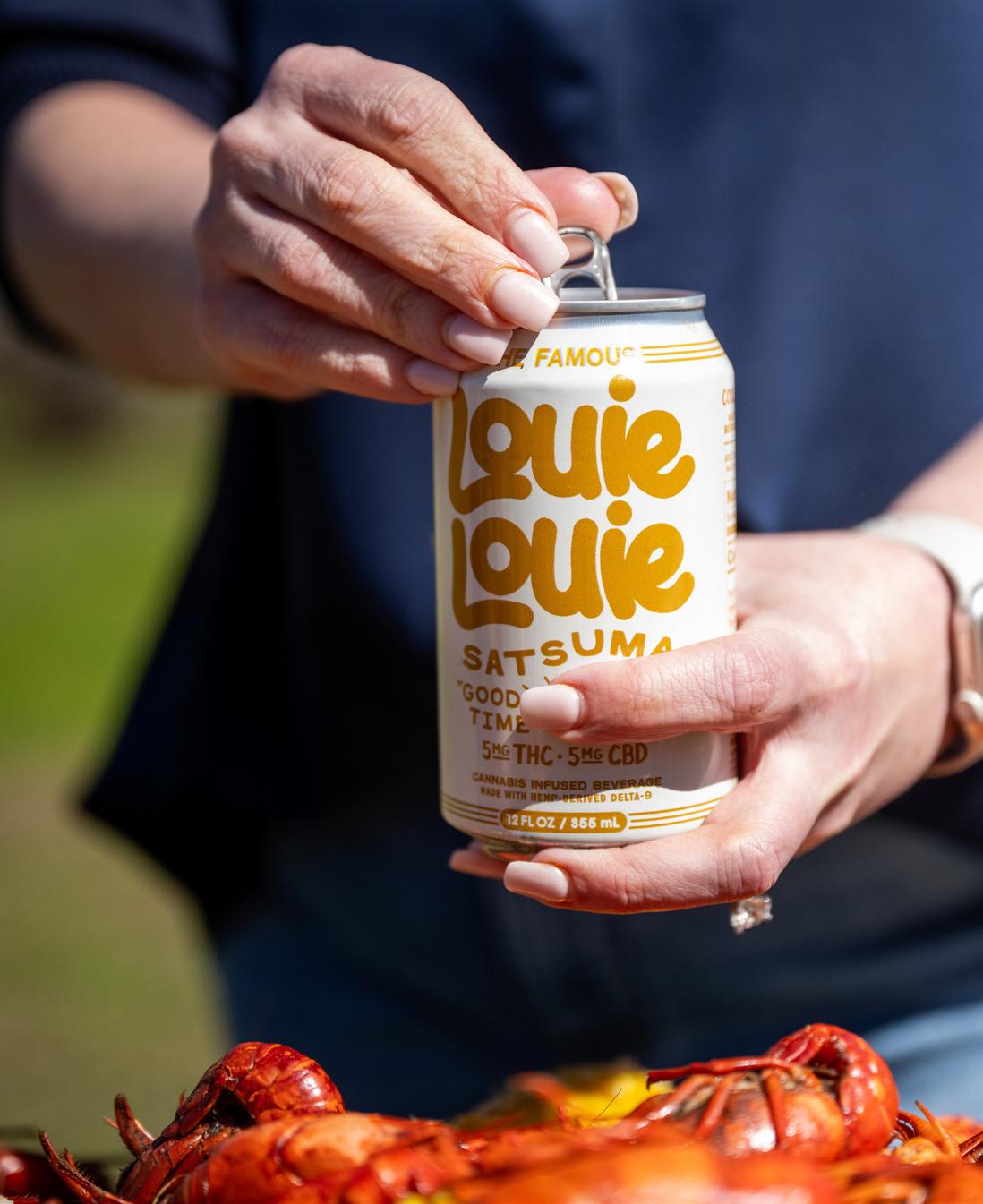
ARROW-CIRCLE-RIGHT Brisk, refreshingly cold beer has long been the traditional beverage served at springtime crawfish boils, but now there’s a new drink in town, and it pairs well with our favorite boiled bugs: Louie Louie “Good Time” Seltzer, a THC/CBD alternative to alcohol beverages. The brand’s Satsuma flavor, inspired by the winter abundance of that citrus fruit in South Louisiana, pairs particularly well with the pungent taste of boiled seafood. Most boils include a citrus component, whether it’s lemon or orange (or even a citrus drink like powdered Tang, as one of Louie Louie cofounder Ken Jackson’s chef friends has used!). The subtle, not-too-sweet orange flavor of Louie Louie Satsuma is a natural complement to the spicy wallop hot boiled crawfish packs.
Louie Louie’s additional flavor offerings include Blackberry Lemon, Hibiscus Cherry and Ginger Cucumber — all are made with genuine fruits and herbs, as well as the highestquality cannabinoids available. Jackson says the 5mg dosage typically takes effect within about 15 minutes; he recommends trying a few sips to see how you feel before consuming more. Find Louie Louie at your local Rouses Market location for an exciting adult beverage alternative to booze for your next boil.

ARROW-CIRCLE-RIGHT
There is no craft brewer more tied to Louisiana than Abita. And there’s no beer more synonymous with a crawfish boil than Abita Strawberry Lager.
Founded in 1986, Abita Brewing takes its name from the small town of Abita Springs, Louisiana, where the company still brews its beverages with pristine artesian water drawn from deep wells. At the time of its opening, Abita Brewing was just the 13th craft brewery in the U.S. — and the very first in the South. For years, it stood alone as the region’s only craft brewery, pioneering a movement that would eventually spread across the Gulf Coast.
Abita got its start in a modest space that now houses the Abita Brew Pub, a restaurant still serving beer and burgers on Holly Street. Its first two releases, Abita Amber and Golden, helped put the brewery on the map, introducing locals
to craft beer before craft beer was even a thing. By 1994, demand had outgrown the original location, prompting a move just a mile and a half outside of town, where the brewery opened its Visitor Center and Tap Room.
Three decades later, Abita continues to expand. A second operational brewery just opened in New Orleans, at the corner of Tchoupitoulas and First Street. But some things never change: The new brewery is powered by the same artesian spring water, transported from the Northshore to the city for the brewing process.
Of course, Abita Amber and Purple Haze remain two of the most recognizable Louisiana beers, alongside Andygator, a deceptively strong Helles Doppelbock; Turbodog, a rich brown ale with notes of toffee and chocolate; and a rotating lineup of seasonal releases. But Abita Strawberry Lager? That’s the one that started the strawberry beer and crawfish craze.
First brewed in 2004, the beer is a nod to Louisiana’s “berry belt,” where Italian and Hungarian immigrants planted strawberries in abundance as far back as the 1800s. Crafted with a pilsner and wheat malt base, the refreshing lager debuted alongside that year’s Ponchatoula Strawberry Festival, quickly becoming a phenomenon. What was once a limited seasonal offering became so popular that, in 2019, Abita made it a year-round staple. Each batch is brewed with 120,000 pounds of peak-season Louisiana strawberries, their natural sweetness balancing the beer’s light hop bitterness. The result? A golden lager with a subtle haze, the perfect pairing for boiled crawfish.
And for those who like their beer with a little more bite, there’s StrawGator — a bold blend of Strawberry Lager and Andygator that takes things up a notch. Just like its lighter counterpart, it’s made for crawfish season.
Julie Joy, Director of Beer, Wine & Spirits











LEVEL UP YOUR VACATION WITH THE ULTIMATE CRAWFISH BLOODY MARY!
From crawfish boils to Bloody Mary bliss, there’s no better place to savor the Gulf Coast than with Brett/Robinson Vacations. Book your stay today and bring this recipe to life with fresh Gulf ingredients and beachfront views!
Ingredients:
• 1 ½ oz Vodka
• 4 oz Rouses spicy Bloody Mary mix
• 1 tbsp fresh lemon juice
• 2 dashes Rouses hot sauce
• 2 dashes Worcestershire sauce
• Magic Swamp Dust Seasoning
Instructions:

• 1 pinch celery salt
• 1 pinch black pepper
• 1 boiled crawfish (for garnish)
• Optional garnishes: celery stick, pickled okra, olives, shrimp, lemon wedge
1. Fill a glass with ice and add all ingredients. Stir gently.
2. Add garnishes: boiled crawfish, celery stick, pickled okra, lemon wedge, and anything else you love.
3. Pair it with your crawfish boil while enjoying the Gulf breeze!




by Liz Thorpe

There’s something visceral about Maine lobster. It’s not just the taste, though there’s no denying the rich, briny sweetness of a perfectly boiled claw. It’s something deeper. A lobster isn’t just an ocean bug; it’s a piece of Maine’s culture, its history and its unique ecosystem. It’s also a damn fine meal that can transport you to a bracing, rocky shoreline even as you sit in your own dining room.
The story of Maine lobster goes back to the indigenous Wabanaki people, for whom lobster was a natural part of their coastal diet. While these early Americans saw the lobster as a gift from the ocean, it was hardly the esteemed delicacy we think of today. And there are numerous stories of colonial servants and prisoners being fed lobster until they protested, but there isn’t much evidence to support this being the case. What is indisputable, however, is that lobsters were overwhelmingly abundant and lacked any status in the colonial food world. In 1630, William Wood authored a book for potential settlers and summed lobster up thusly: “Their plenty makes them little esteemed and seldom eaten.” Despite lobsters’ lack of popularity, a nascent lobstering industry began in Maine in the 1600s.
Even then, there were uses for these coldwater crustaceans. Lobster shells made excellent fertilizer (they still do; at my local garden shop in Maine you can buy lobsterenriched topsoil if you need a hit of nitrogen and phosphoric acid), and the meat is high in protein, making it a valuable — if then somewhat disdained — nutritional source. But unless lobster is immediately cooked, it spoils within a day, so it remained an overabundant food source exclusive to coastal New England until the mid-19th
technology, enabling lobster meat to be cooked and packed in coastal New England to travel as a valuable protein source for Americans pushing ever westward. Even more so, the expansion of railroads had a profound impact on the Maine lobster industry. For the first time, live lobsters could be transported out of state to the growing urban markets of Boston and New York. By the late 1800s, lobster was being served in upscale city restaurants. Concurrently, it was marketed to a growing middle class as a special-occasion luxury food. Summer tourists visiting Maine might not be able to eat lobster at home, but they could enjoy it on a coastal vacation, further cementing the connection between the place and the meal. This shift in perception, combined with transportation advances, growing affluence and marketing strategies, solidified lobsters as a premium seafood, making it a staple on restaurant menus and a symbol of coastal New England, and particularly Maine, cuisine.
By the early 20th-century, a boom took place, and lobstermen weren’t just feeding their communities; they were supplying an entire nation. The fledgling industry that began in the 17th century, in places like Bar Harbor and Portland, found itself at the heart of a rapidly expanding economic engine.
The Gulf of Maine, with its cold, clear waters and rocky seafloor, teemed with the marine creatures, and there were few jobs then as lucrative as lobster fishing.
Today, Maine leads the nation in lobster production, harvesting over 100 million pounds of lobster a year. Unlike with much of the fishing industry, which has changed dramatically since the introduction of massive industrial trawlers, lobsters are caught mostly the same way they were 450 years ago. The most prominent modernizations are regulatory: The industry has adopted stringent restrictions aimed at sustaining Maine lobstering. Lobstermen manage their catch by size: Crustaceans under the minimum three-and-a-quarter inches from the rear of the eye socket to the end of the body shell are tossed back, but so are those over the maximum five inches. This gives younger animals an opportunity to breed and older, larger breeders an opportunity to continue.
Easily identified by the cache of eggs beneath their tails, egg-bearing females must be returned to the sea. Beforehand, however, their tails are notched so they can be identified as a breeding female, even when they’re not actively carrying eggs. Lobster traps are monitored too, with hatches that allow below-minimum lobsters to escape.

knowledge of the best spots for traps, the depths to set them and the right time of day for hauling them in. As someone lucky enough to spend part of the year in Maine, I’ve gotten to know a local lobster team, the brothers Jett and Lake Lindelof, who haul lobster each summer in the Midcoast Maine waters of Penobscot Bay. Unlike many lobstermen, Jett didn’t learn the trade from his father and grandfather but is quick to remind me that many lobstermen on his home island of Islesboro do.
Jett found his way to lobstering at the tender age of 12, when he went looking for work that would keep him on the water as much as possible. He met a fisherman in need of a deckhand and spent his first summer waking at 4 a.m. in time to help load the boat by 5 a.m. and be out on the water to haul traps two at a time. His primary work was baiting traps and banding lobsters, the typical practice of binding the powerful crusher claw and smaller but equally fierce “pincher” or ripper claw with rubber bands to keep the captive lobsters from attacking each other (and to protect the fingers of fishermen). Over the course of 10-hour days the team would haul 400 traps over dozens of miles, crisscrossing Penobscot Bay and bouncing between idyllic tourist haunts like Rockport, Isleboro and Camden.
The following summer, Jett and his older brother rehabbed an abandoned 20-foot boat on their property, got student licenses and lay 50 traps around their home island. He said it was only a few days before his phone started ringing and lobstermen who’d been fishing for years (and generations) gently but firmly informed him that he couldn’t just lay his traps wherever he wanted. Although a fishing license gives you access to an entire zone of Maine water, lobstermen work by the unwritten law of territorialism. The newest fishermen must go the farthest afield into waters that haven’t already been claimed. While the community was tolerant of the teenagers’ ignorance, the Lindelofs were quick to move their operation into more northerly waters; if they’d dawdled, Jett remarked, it would have been a matter of weeks before their traplines were cut as a warning from more established fishermen.
Six years later, their operation has grown from 50 traps to 800, and four days a week of lobstering from May to September. While

roughly half of lobstermen fish all year round, this requires spending winters in deeper, colder ocean waters to follow the lobster as they move seasonally. Lobstermen who are based farther inland tend to take the winters off, splitting their time with other jobs. For Jett, lobstering isn’t a forever thing; it’s something he opted into to be on the water, to challenge himself with starting and sustaining a business, and to participate in a community that is unique to Maine. Lobstering “didn’t feel like a job to me. It’s very important to Maine’s economy, heritage and culture. It’s family-oriented. It’s passed down through generations. It’s something very special about Maine.”
For fishermen whose sole profession is lobstering, the biggest concern is the impact climate change is having on their waters and on the future of their industry. As the waters in Maine warm beyond the 50-60°F temperatures that are ideal, lobsters will migrate toward the northern regions of the Gulf of Maine and beyond, into Canadian waters, particularly along the coasts of New Brunswick, Nova Scotia and Newfoundland. These regions are already seeing increased lobster populations as the lobsters move to colder, deeper waters. While lobsters may be more abundant in northern waters, these regions may not be as accessible to Maine lobstermen due to the distances involved, the costs of fishing farther offshore and the potential for increased competition with Canadian fishermen. Additionally, warming temperatures could alter the timing of molting seasons, affect the availability of food or bring new predators into these waters.
The connection between lobstermen and their coastal communities is deep. In towns like Rockland, Camden and Bar Harbor, the lobster trade provides jobs in every corner
of the economy — from the wharves to the restaurants, the docks to the shops. Lobster traps line the shore, and lobster boats are a permanent fixture in the harbors. The local culture is steeped in lobster history, and visitors to the state often arrive expecting to be part of that legacy — whether it’s enjoying a lobster roll at a local diner or going on a boat tour to witness the lobster traps being pulled in.
First, you must start with a fresh, live lobster, and for that you need a lobster tank. Rouses Markets is one of the few area places remaining where you can even consider a homemade lobster dinner. Lobster in hand, you can go a few different routes. For a boiled lobster dinner, à la a rustic Maine lobster pound, you’ll need a generous amount of melted, salted butter, nutcrackers (claw crackers) and, ideally, metal picks to extract even the tiniest bits of meat from knobby little lobster legs. While a cold beer hits the spot alfresco on a sunny Maine afternoon, lobster at home is even better with a French white burgundy. Chardonnay has a creamy, buttery mouthfeel that complements the meat beautifully, and the French ensure good minerality and fruity acidity of their burgundy, so you don’t wind up with a mouth-coating butter bomb.
If a lobster roll is what you desire, you must first decide: Connecticut style? Or Maine style? The lobster roll is said to have been invented at Perry’s in Milford, Connecticut sometime in the 1920s. I think of it as the

lazy person’s lobster, as Connecticut-style is simply lobster tossed in hot, melted butter and served on a hot dog bun. The Mainers, meanwhile, serve their rolls with the meat lightly tossed with mayonnaise and maybe even some minced celery, nestled inside a wider, flatter and lightly toasted New England hot dog bun. This really is beer territory, and a hazy IPA with bright, tropical fruit notes, like Gnarly Barley’s Jucifer, balances all that white bread and richness.
And, from low to high, if you want to live like the 19th-century New York upper class who clinched lobster as a luxury food, consider experimenting with either Lobster
Thermidor (1891) or Lobster Newburg (1876). Both sit firmly at the crossroads of (at the time) innovative cooking techniques and French haute cuisine. Lobster Newburg melds poached lobster with a decadent sauce of cream, egg yolks, and sherry, cognac or madeira, while Lobster Thermidor preserves split lobster shells, into which cooked, chopped lobster meat is stuffed, after blending with a buttery wine sauce or a winey béchamel sauce and topped with a cheese (typically Gruyere) before broiling to make a little crust, depending on who you’re asking. The whole stuffed shell is then briefly broiled. If you’re going to do this I recommend leaning in and entirely avoiding
anything like a green salad, but sticking to roasted potatoes, well-chilled champagne and something like chocolate mousse to finish. Then, a long nap.
Whatever way you eat your lobster, hold tight to the fact that you are eating a piece of history, and a piece of a very vital and vibrant present. I’m hard-pressed to find someone who can think of lobster without thinking of Maine; even those who have never been there can experience a taste of that magical place when they eat lobster.
Visit our website at www.rouses.com for great lobster recipes.
In Maine, the hunt for the perfect lobster roll — freshly picked lobster with drawn butter, mayo or both — or a whole lobster straight from the trap is a must. While lobster is available year-round, many shacks operate only from mid-April to mid-fall (summer is peak season), so check ahead.
A Route 1 icon at the foot of Wiscasset’s Main Street for over 80 years, Red’s Eats has been voted Best Lobster Roll in New England countless times and is in the TripAdvisor Hall of Fame. Each overstuffed roll features more than a whole lobster, with claw meat peeking out below and a split tail on top.
Right across from Red’s, this little red stand on the Sheepscot River serves more than just lobster rolls. Unlike its famous neighbor, Sprague’s offers whole-lobster dinners complete with corn and all the fixings.
Tucked away on Spruce Head Island, McLoons is a family-owned shack serving fresh, no-frills lobster across from the area’s oldest working wharf. Their classic roll has a quarter pound of meat, while the Lobster Rolls Royce boasts a half-pound of the meat. This might just be the most beautiful place in Maine to eat a roll.
Young’s in Belfast started as a wharf built by Bud Young in 1959. By 1980, the family had added a restaurant, turning it into a must-visit spot for lobster lovers.
A Southwest Harbor staple since 1932, Beal’s began as a wholesale operation before evolving into a full-fledged restaurant in 1969. With dockside dining and boats delivering fresh catches, it’s pure Maine authenticity.
Perched on remote Monhegan Island — 10 miles offshore and accessible only by boat — this is the ultimate coastal retreat. Its car-free, walkeverywhere vibe pairs perfectly with fresh-off-the-boat seafood and salty, windswept charm.
Back after storm damage forced a hiatus, Perry’s in Surry is a quintessential lobster destination. Legendary seafood meets panoramic waterfront views, making its return even sweeter.
Hidden in the quiet village of Bernard, this Down East gem has been serving fresh lobster since 1993, carrying on the legacy of the F.W. Thurston Company, founded in 1946. Enjoy fresh seafood and postcard-perfect harbor views.
Lunt’s Dockside Deli
Located in the remote offshore village of Frenchboro, Lunt’s is a family-run takeout joint accessible only by ferry or private boat. It’s a hidden treasure for those seeking Maine’s quieter, more rugged side.
Perched on Portland Pier in the heart of the Old Port, Luke’s sits beside its lobster-buying station on the working waterfront. Grab a lobster roll or a whole steamed lobster and soak up the authentic Maine harbor vibe.
The Clam Shack
A Kennebunkport favorite since 1968, this spot serves an entire lobster’s worth of meat on a toasted round roll instead of the traditional hot dog bun. It’s also a go-to spot for fried clams.

























































by Nick Underhill
Kellen Moore is just a guy who loves football — he always has been.
The son of a high school football coach in a small town in Washington, Moore grew up around the game and has always been fascinated by how plays are designed. He used to study his dad’s playbooks and old VHS tapes. Then, as he got older, he started scouring the internet for playbooks, which he would download and print out.
In fact, after Moore committed to Boise State, he went on the internet, found a playbook, and started studying it without ever really knowing if he was looking at a fabrication. When he finally got on campus, he took it with him — and yep, it was the real deal.
So, if you’re looking at the new Saints coach and wondering how a 36-year-old managed to get to this role so quickly, just know that he probably got started on his journey a lot earlier than most do. It helps that he grew up watching his dad coach the game, but it helps that the game and the Xs and Os that make it up have always been his passion.
How did Kellen Moore get here? By loving the game.
“My dad was the high school football coach for our team, the Prosser Mustangs,” Moore said. “Had a little Friday Night Lights feel to it, small town out of Washington. Those were my idols growing up. That’s what I wanted to be. Every day, getting done with school, I just went down to the football field and I was the ball boy. I just hung around those guys. That’s really what my childhood was. I was fortunate to be around it, sitting there watching film with him [his dad] at night.”
I really like that. Something about it feels real, authentic. If the Saints are going to get out of their mess, it will take something real and authentic. And they’re certainly going to need someone who just loves the game and is here for the right reasons. It’s early, and a lot can change, but Kellen Moore certainly feels like all of those things.
Moore joins the Saints fresh off winning the Super Bowl as the Philadelphia Eagles’ offensive coordinator. This job is going to be a lot harder. The Eagles had all the pieces on offense — a good quarterback, two good receivers, a great running back and the best offensive line in the league — and just needed the right guy to come in and get them all working together in harmony. Moore did that during his one year with the team.
The difference now — and it’s a huge one — is that New Orleans needs to build something new.
There are still some good pieces here, and getting healthy after some really bad injuries last year will help, but there’s a reason this job came open, and it isn’t because everything here is in working order. The Saints need to get better just about everywhere on both sides of the ball, and they need to figure out how to get “younger” at some key spots. But it doesn’t sound like the team will dive

headfirst into a rebuild. Instead, it sounds like they’re going to try to stay competitive and attempt to win the NFC South while simultaneously working to revamp the roster. That won’t appease folks who are ready to tear the team down to the studs and build it from the ground up, but Moore doesn’t believe in trading and cutting everyone — or in becoming bad on purpose just to get a higher draft pick. He also believes this team is closer to winning than many on the outside think.
“You can’t ever walk into a team meeting or a locker room and say, ‘We’re not competing,’” he said. “Competing to win our division will always be the goal. And we feel like we’ve got really good pieces to do that.”
Since arriving, Moore has spent time studying the roster and meeting with players. His superpower is figuring out what his players’ superpowers are and trying to mold his offense around those things — which, again, is something this team really needs. Some coaches come in with a playbook and a system and try to make everything fit what they want to do. Moore likes to try to figure out how to take the existing talent on the roster and mold the offense around them. You saw him do this last year in Philadelphia; the way he changed that team was almost jarring. Throughout his career, Moore has been known as someone who likes to pass first and win through the air. But he had a great offensive line and Saquon Barkley (generally considered the best running back in the NFL currently) on the roster, so he leaned more into those aspects and won a Super Bowl as a result.
Solving these kinds of puzzles is what excites Moore most about being a coach; that really isn’t all that surprising, considering this is a man who was once a kid scouring the internet for playbooks and information. So look for him to put Chris Olave, Rashid Shaheed, Taysom Hill and Alvin Kamara in player-friendly situations that highlight their skills and talents in ways we haven’t seen since Sean Payton took off for Denver.
That guy — Sean Payton — was just a guy who loved football, too. Hopefully, it works out the same way for the Saints again.
If the Saints are going to find their way out of the doldrums of mediocrity, they’re going
to have to draft better and make sure they’re developing the players they bring on their roster. Since the transformative 2017 draft that brought players like Alvin Kamara, Ryan Ramczyk and Marshon Lattimore here, New Orleans has only selected one Pro Bowler. You need a higher hit rate to be a successful team, especially if you’re managing the salary cap the way the Saints do. And New Orleans needs just about everything. They
could again target players on the offensive and defensive lines and will need some pass rushers to fill out new defensive coordinator Brandon Staley’s defense. But don’t be surprised if the Saints look at some offensive playmakers early in the draft, too.
If you don’t spend a lot of time on the internet, you might be wondering who this person is talking about your beloved New Orleans Saints. So, let me finish this by introducing myself. I’m Nick Underhill. I’ve been reporting on the Saints since 2014 — first for The Advocate and now for my own website, NewOrleans.Football.
There was a year in between when I left to cover Tom Brady and the New England Patriots, but something about New Orleans kept calling me back; after about three months away, I started trying to find a job in the city. With no spots open at any of the local media outlets, there was no easy cure for my homesickness. I decided to bet on myself and start my own company. I knew in my heart the city I loved would love me back, and things would work out. I was right. The fine folks at Rouses were among the people who believed in my vision, and I’m incredibly proud to have them sponsor my podcast.
I live Uptown with my wife, Su, and our two bulldogs, Sherane (English) and Rougaroux (French). When I’m not watching or writing or talking about the Saints, we’re usually streaming

a movie at home or at the theater or going on walks around the city. Life is simple, but life is good. Can’t complain when you’re doing what you love and living with people (and dogs!) that you love.
When Marcy asked me to write for the magazine, we talked about a few different things. I considered new challenges, like writing about food, but she came up with the right idea: She told me to just do what I do. I couldn’t turn it down. This felt like the perfect opportunity to blend the pillars of my life, and what are probably the pillars of many of your lives, too: Football, food and community.
I couldn’t be happier to be doing this, connecting with people on this level. I want to make this space fun, keep you informed on the team, and also make it feel like yours. Every issue, I want to answer some of your questions. So, if you have one, reach out to me and send it my way (nick@neworleans.football). I look forward to talking to y’all in each edition and for us to get to know each other. Hopefully, we can bond over a better football season than the last one.
Nick Underhill












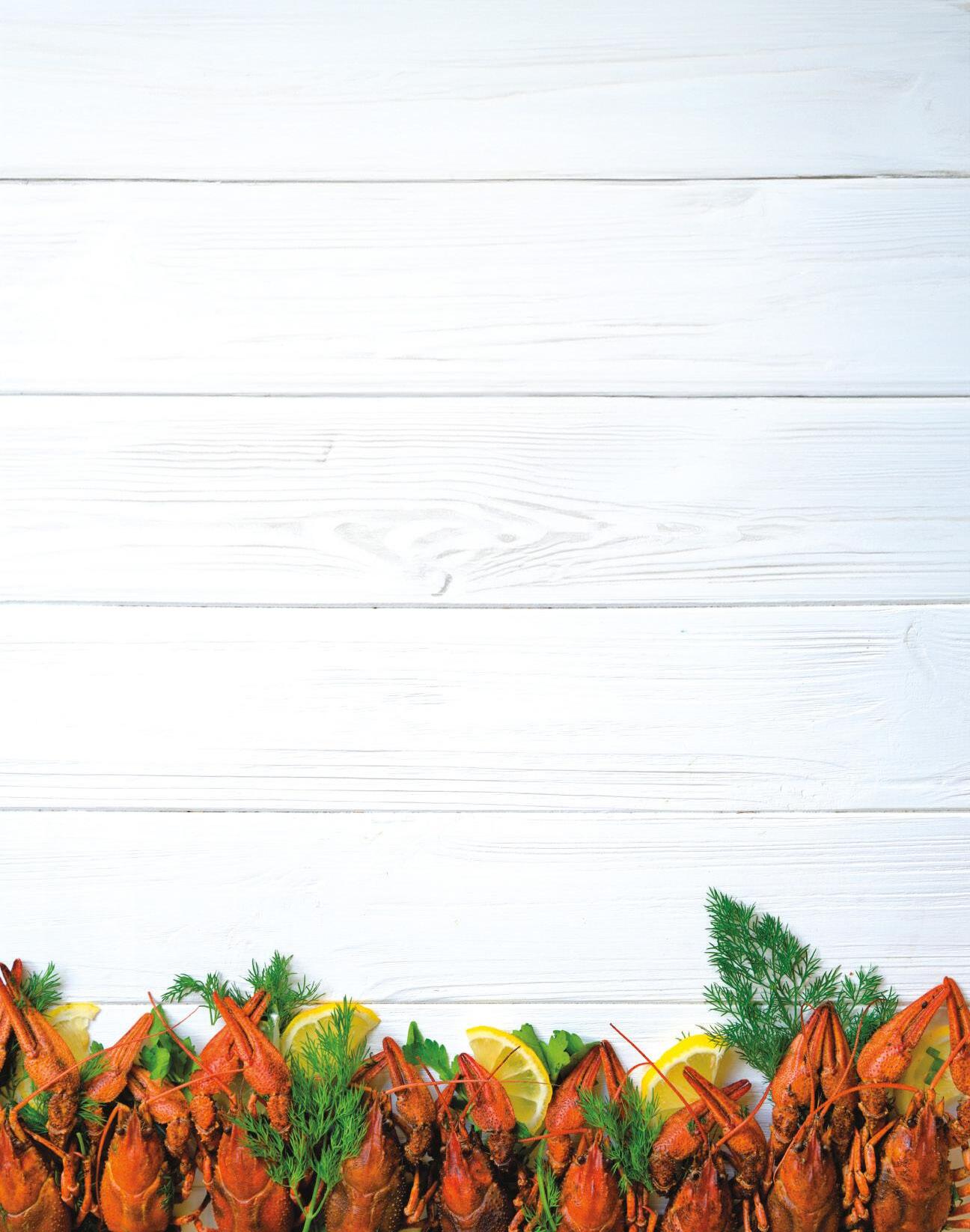













































































































































































VITALIZES BODY AND MIND®.









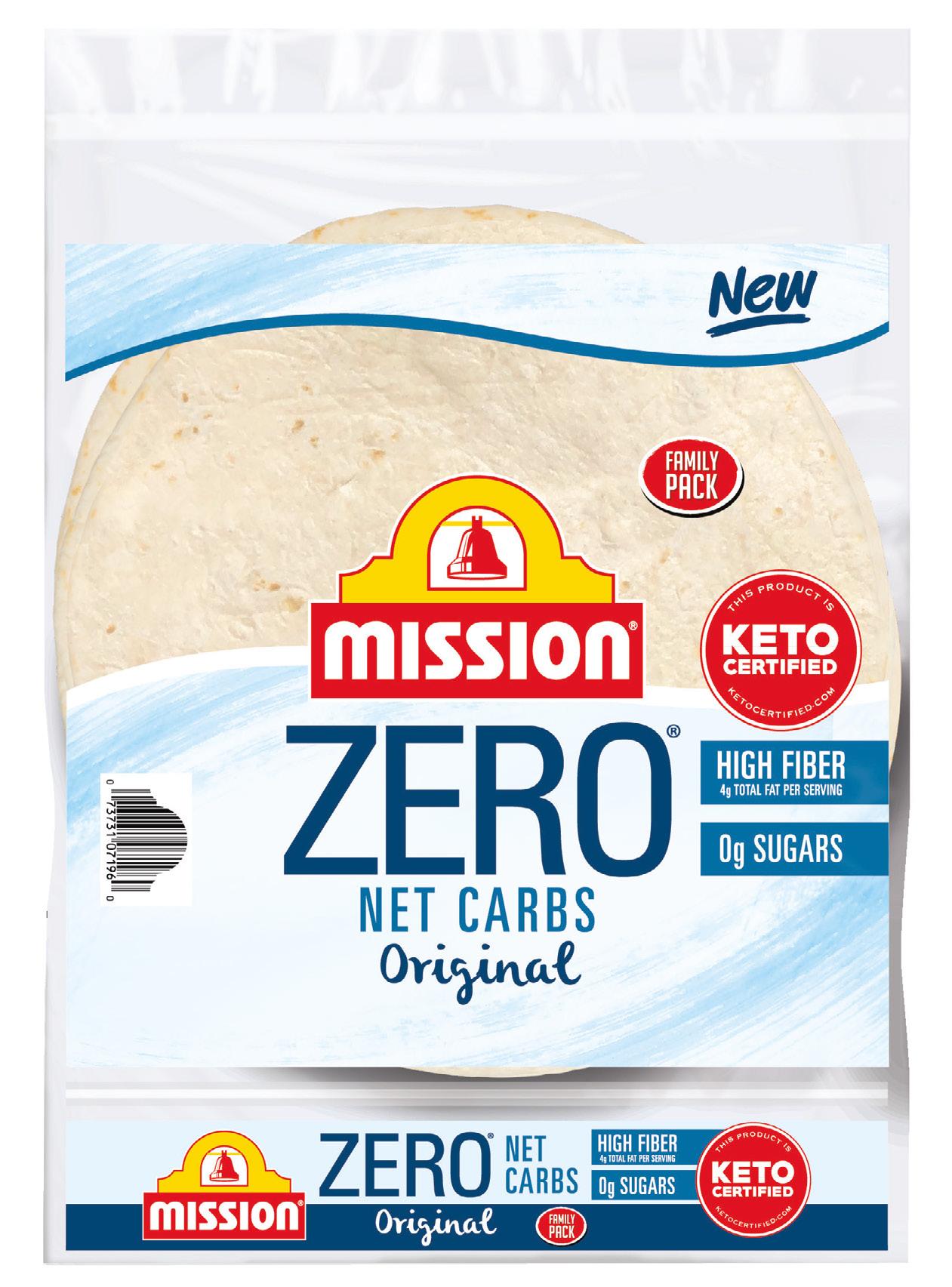





By Dominic Massa
The cover of Tom Fitzmorris’ 2010 book Hungry Town calls it “a culinary history of New Orleans, the city where food is almost everything.” For the city’s preeminent restaurant critic, who died February 12, truly everything was about food, in a career of more than 50 years spent eating, writing and talking about it.
He called himself a walking New Orleans cliché: He was born in the city on Mardi Gras in 1951 (delivered by a jazz musician-obstetrician), and he was never absent from his hometown longer than the six weeks after Hurricane Katrina. As a student at UNO, Fitzmorris met history professor Richard Collin, famous as the city’s first newspaper restaurant critic, the Underground Gourmet. His writing opened a new world for Fitzmorris, who in 1972 penned his first restaurant review for the Driftwood student newspaper. It launched his career and changed his life.
His portfolio — which includes thousands of articles, 23 books and weekly reviews for WYES-TV’s “Steppin’ Out” — expanded when he launched the New Orleans Menu. At first a printed newsletter featuring his reviews, it eventually became nomenu.com. After Hurricane Katrina, it became an indispensable barometer of the city’s recovery with its running list of the city’s restaurant reopenings.
He did all that while hosting a daily radio show, which he began in 1978 on WGSO-AM as “Mr. Food.” In 1988, he was hired by WSMB’s Mary Ann Connell. She was fired a few weeks later, though not for hiring Tom. He kept his job and landed a promotion: to husband. He and Mary Ann — who is now host of The Food Show and who publishes nomenu.com — had two children, Jude and Mary Leigh, and three grandchildren.
In a touching eulogy she delivered at his funeral, Mary Leigh called him a “supernova of talent and strength and love and light and the joy of life.” She described a talented writer, with “grit, his ineffable work ethic, his laser-focused passion on a single topic, his unfathomable prolificity” and a broadcaster with a “velvet voice, peppered with an unnecesarily wonderful singing voice, quick dry wit, utter lack of shame, creative alter egos and countless shticks.” She said he “gave 200 percent of his time and passion and talents and soul to sharing his love of food with the world, and then came home and found another 300 percent to give to being our dad.”
Fitzmorris boasted that there was no other daily radio food show like his in America. That’s because there was no one else quite like him. His body of work leaves a delicious legacy that, in Mr. Food’s mind, could only have happened here. “What most engages me, in work and play, is the food of New Orleans,” he said. “I love it passionately.”

sack or hot from the pot. Our down-the-bayou recipe has been perfected for over three generations, so our seafood always comes out seasoned to perfection.


